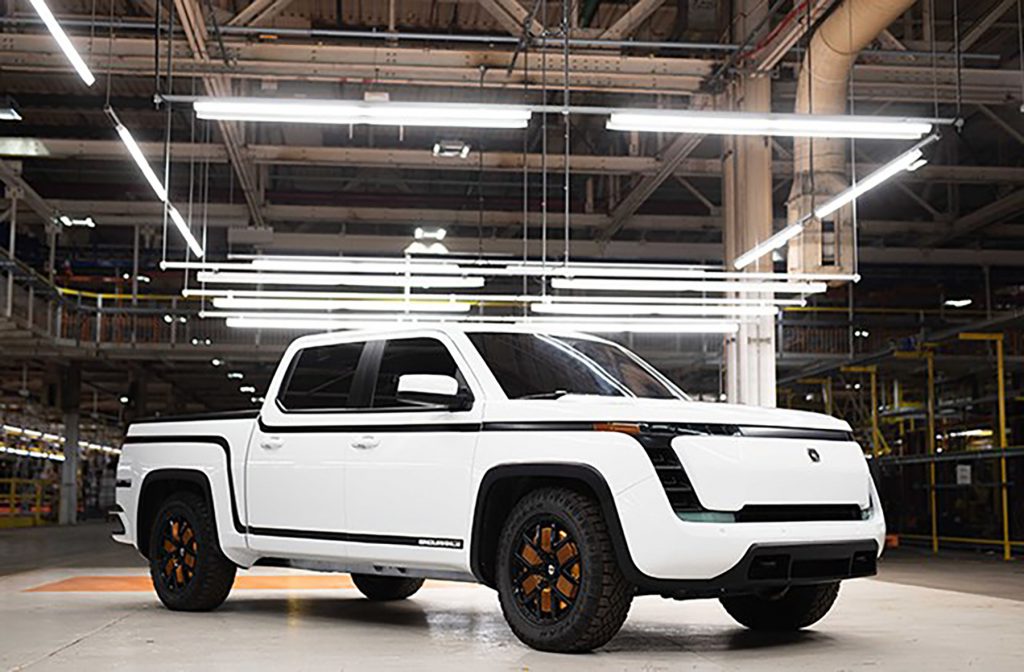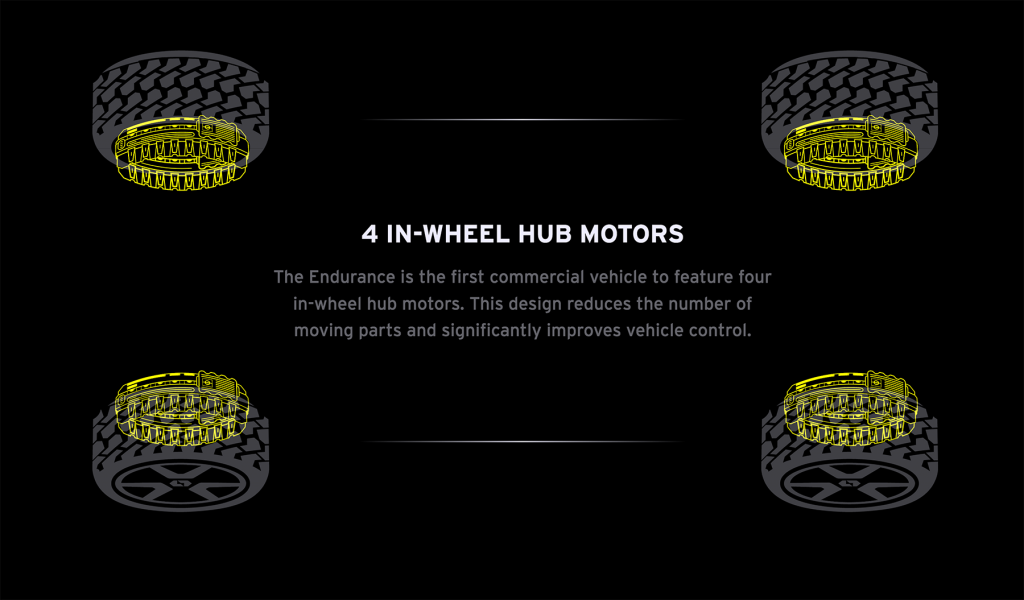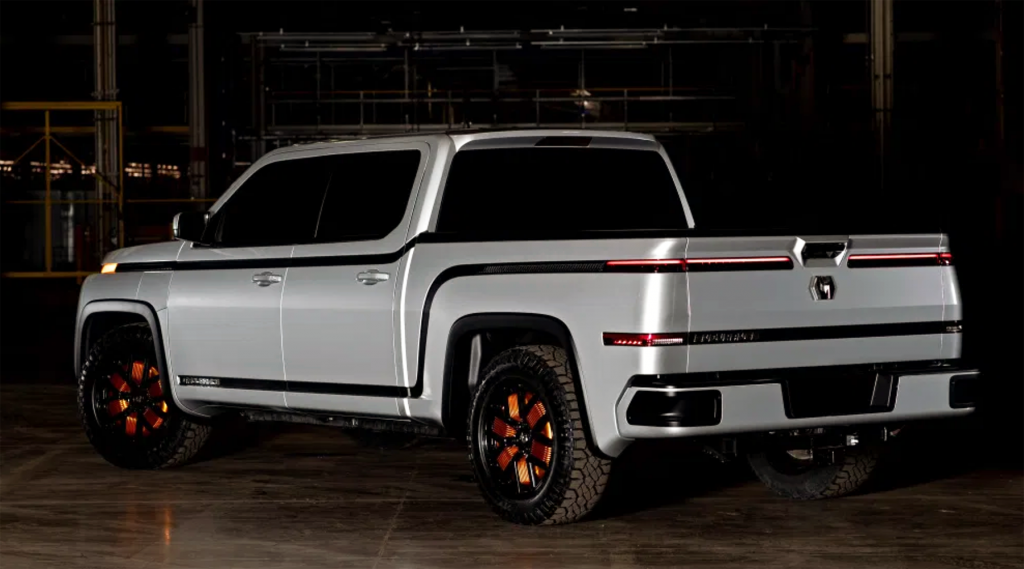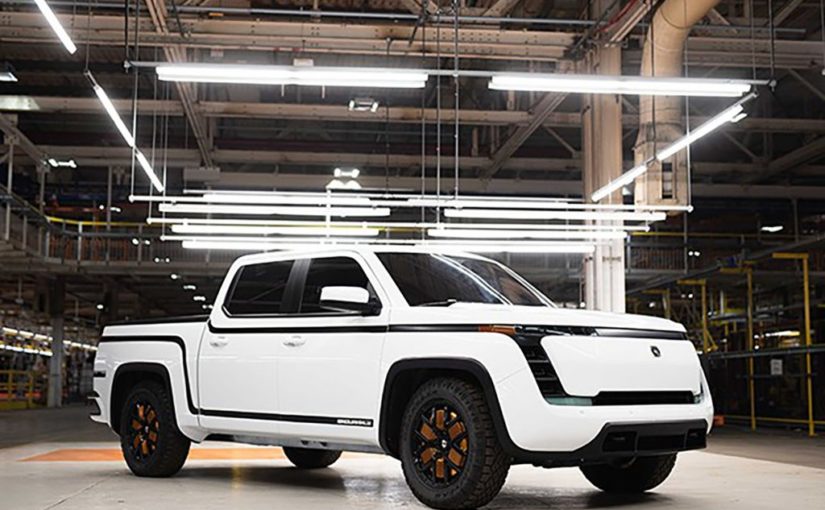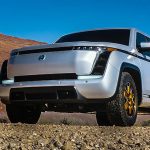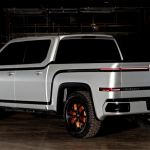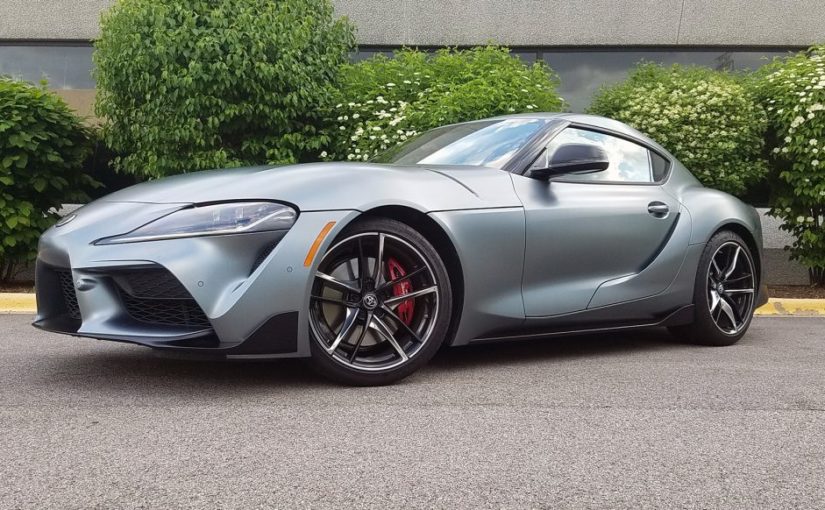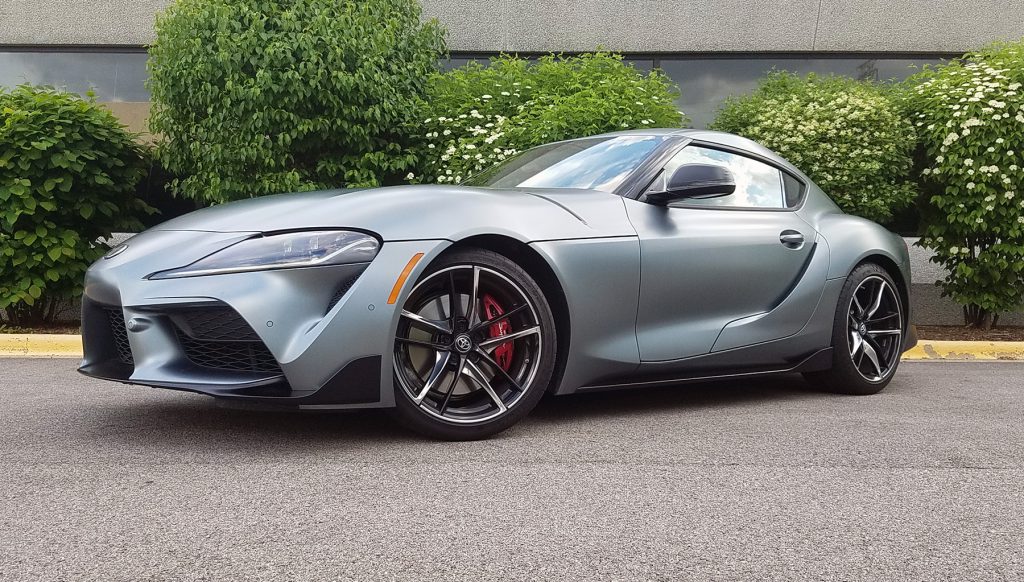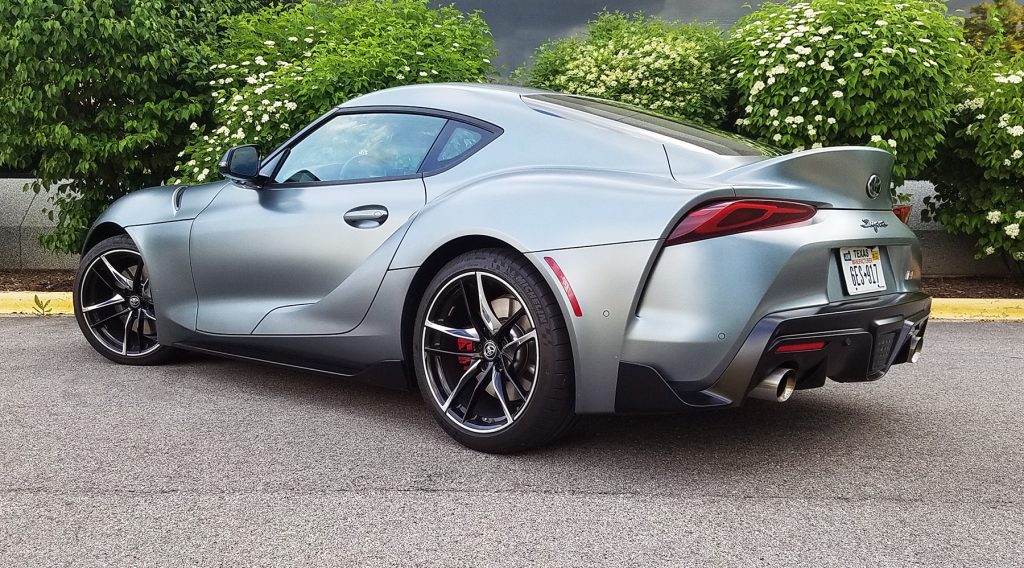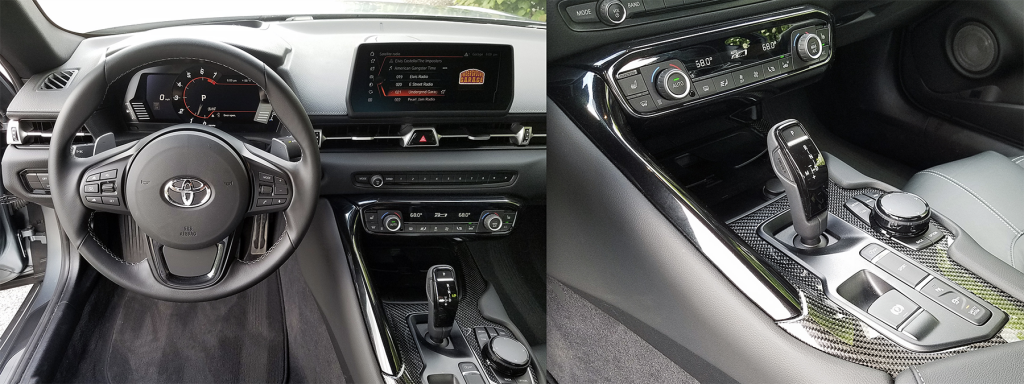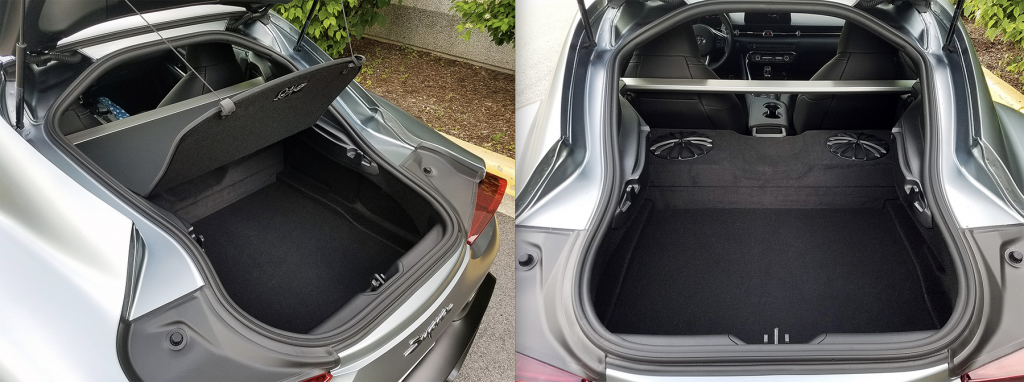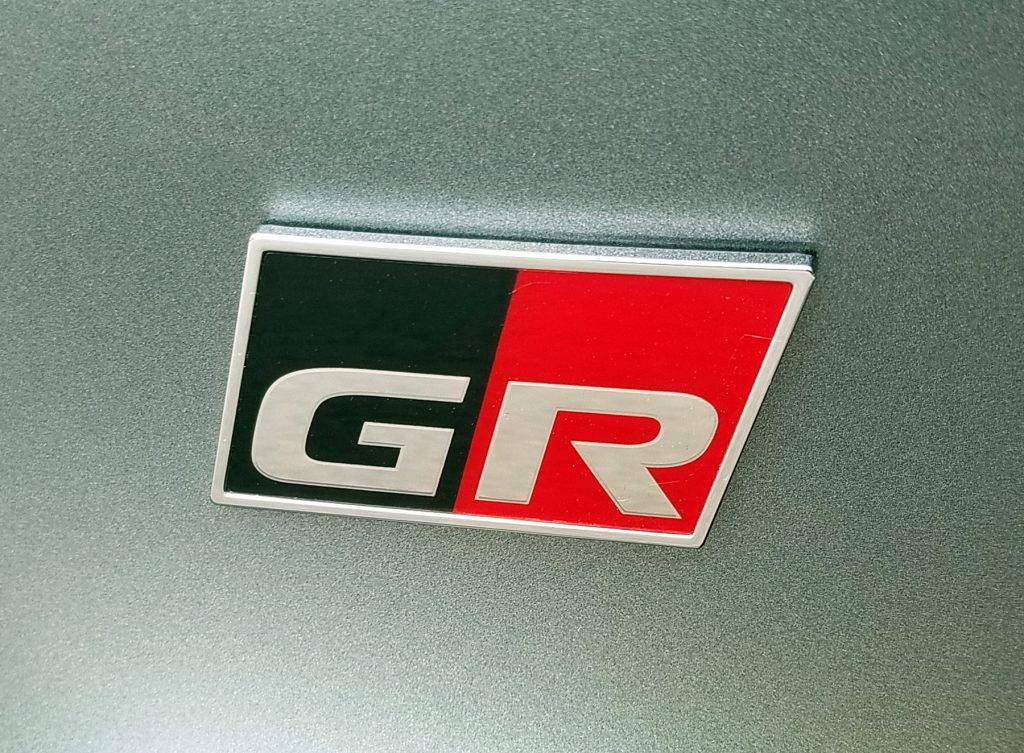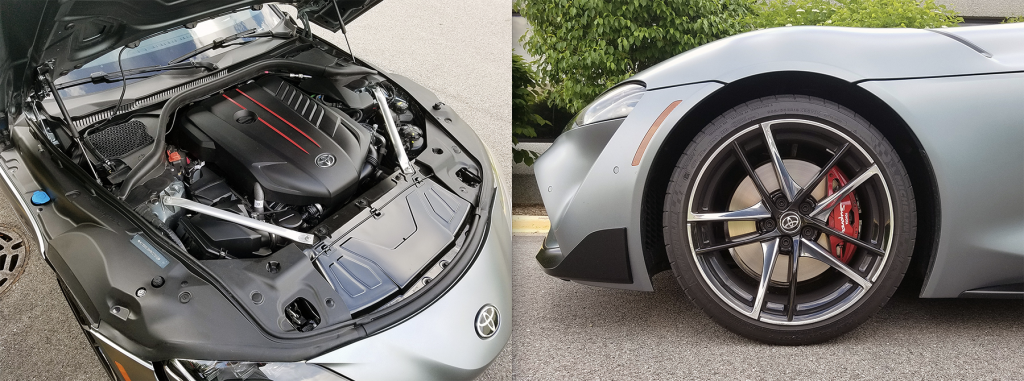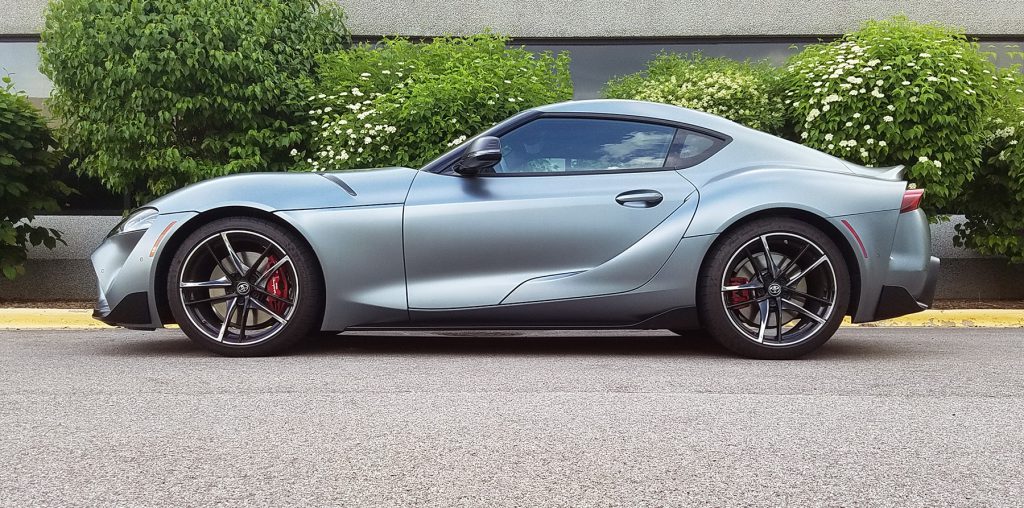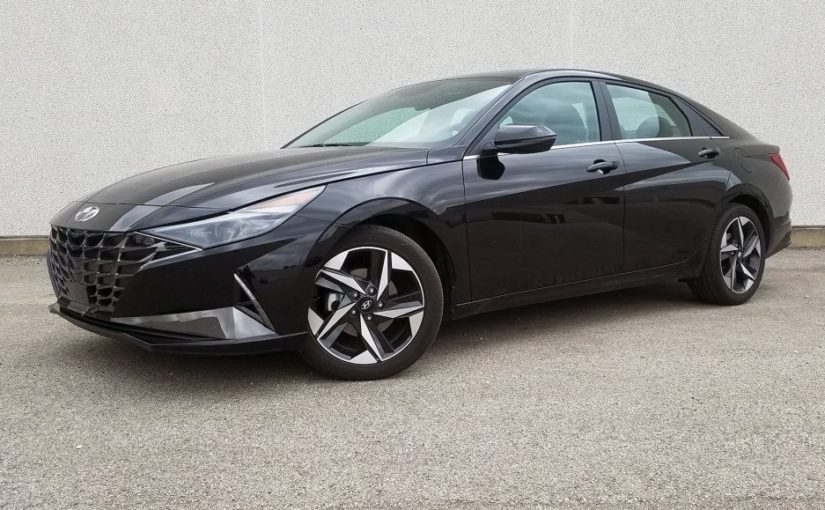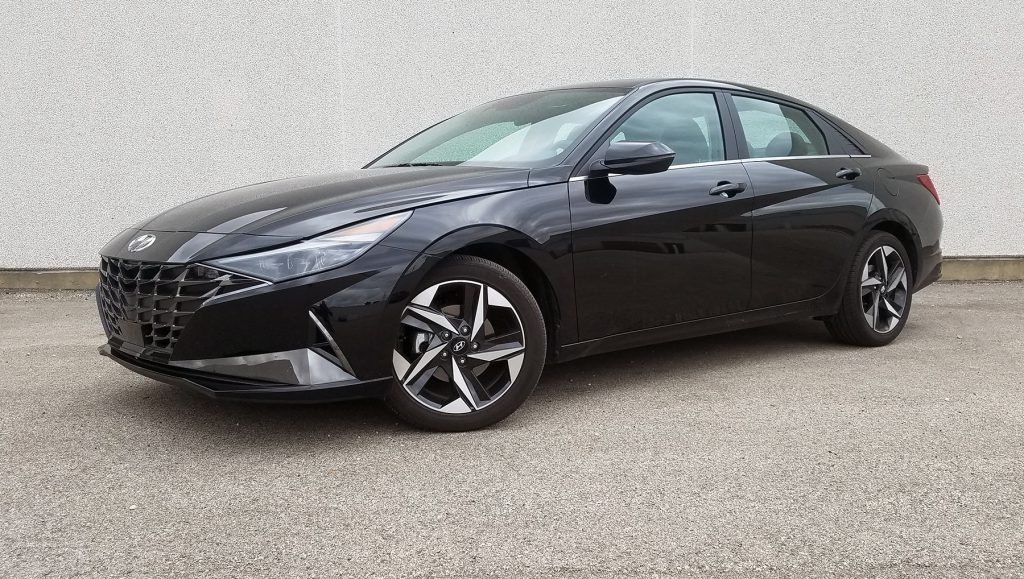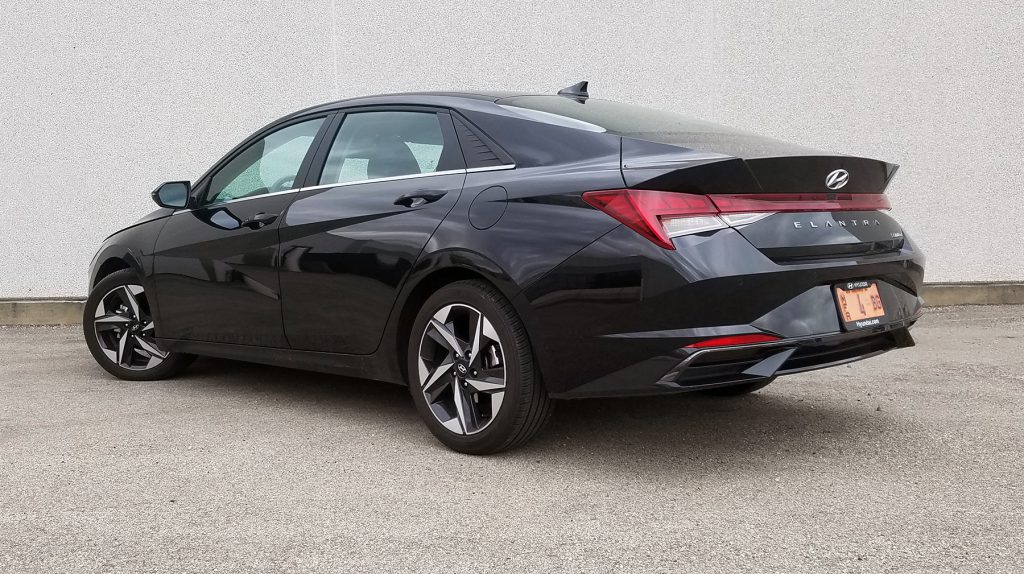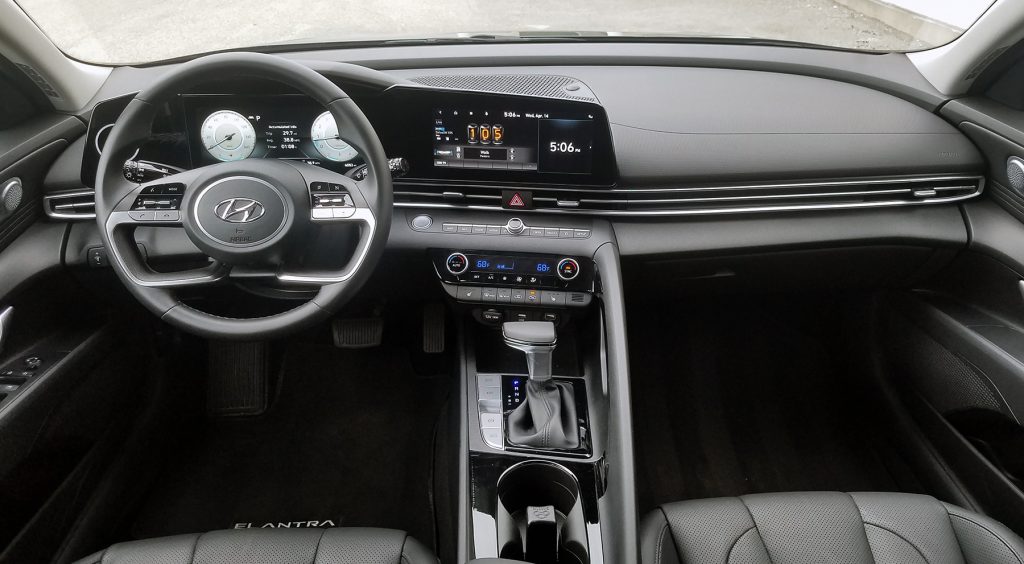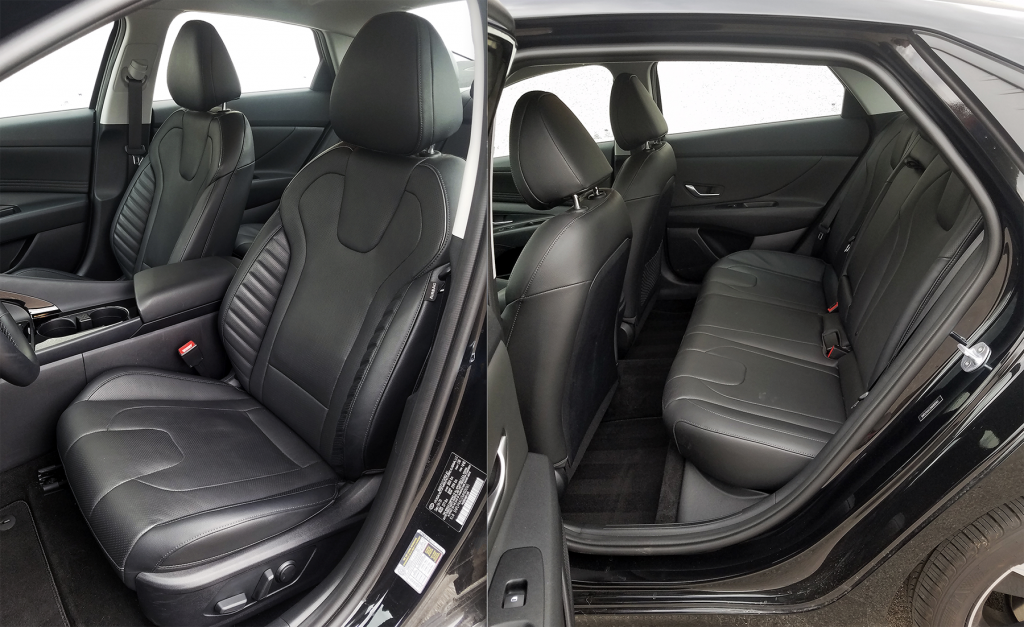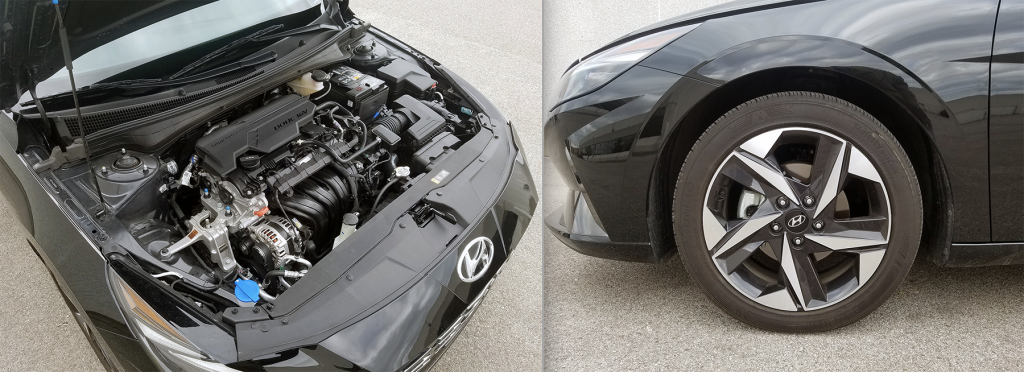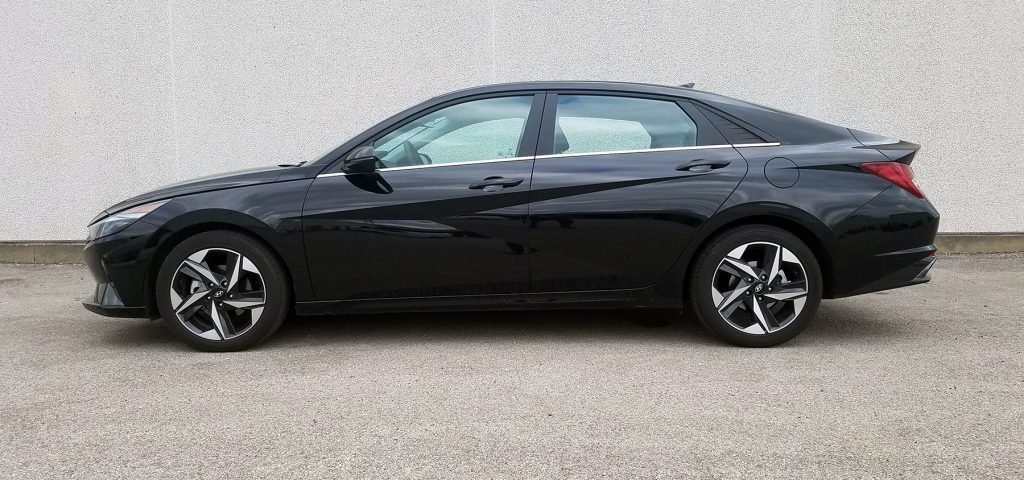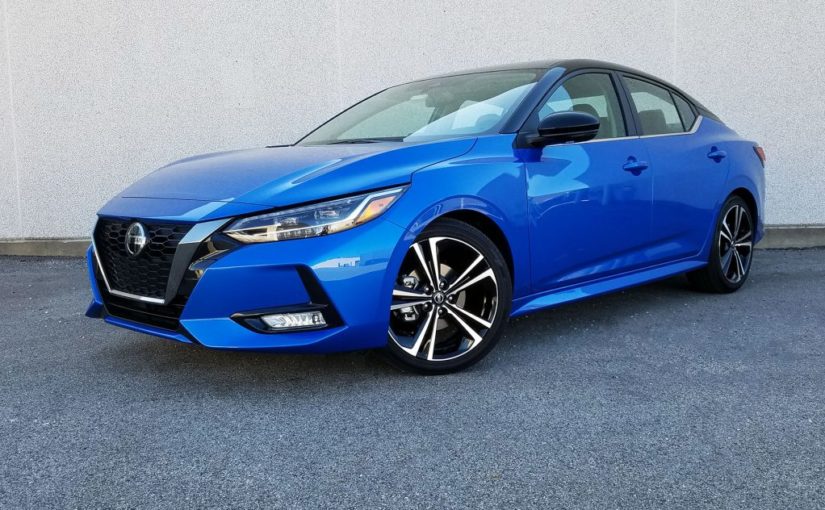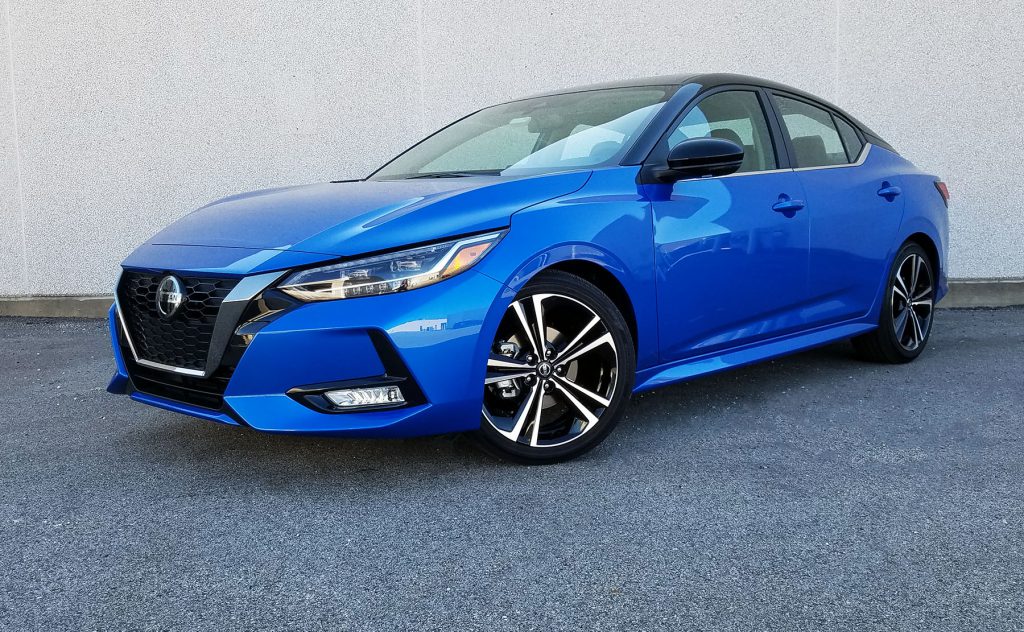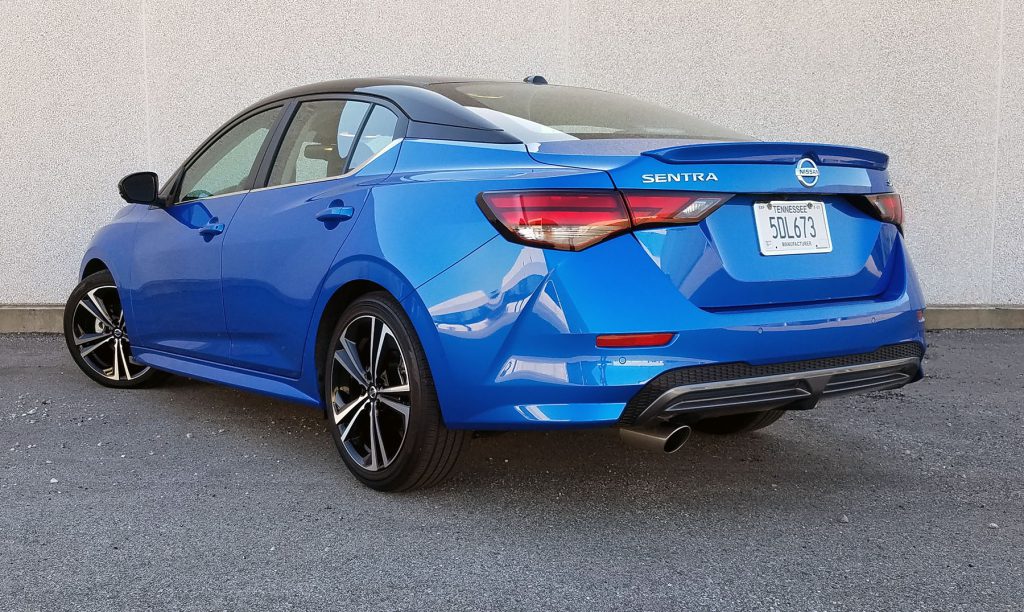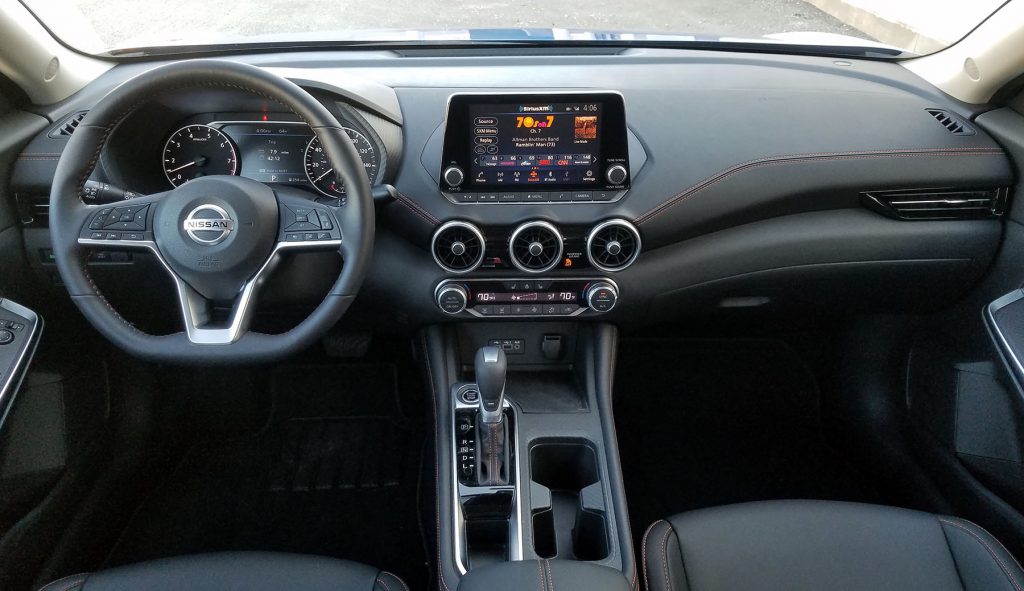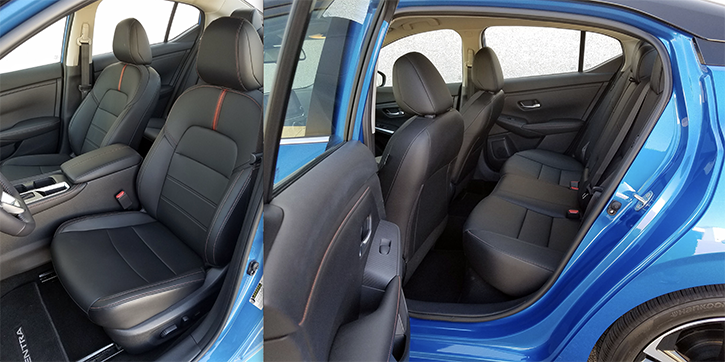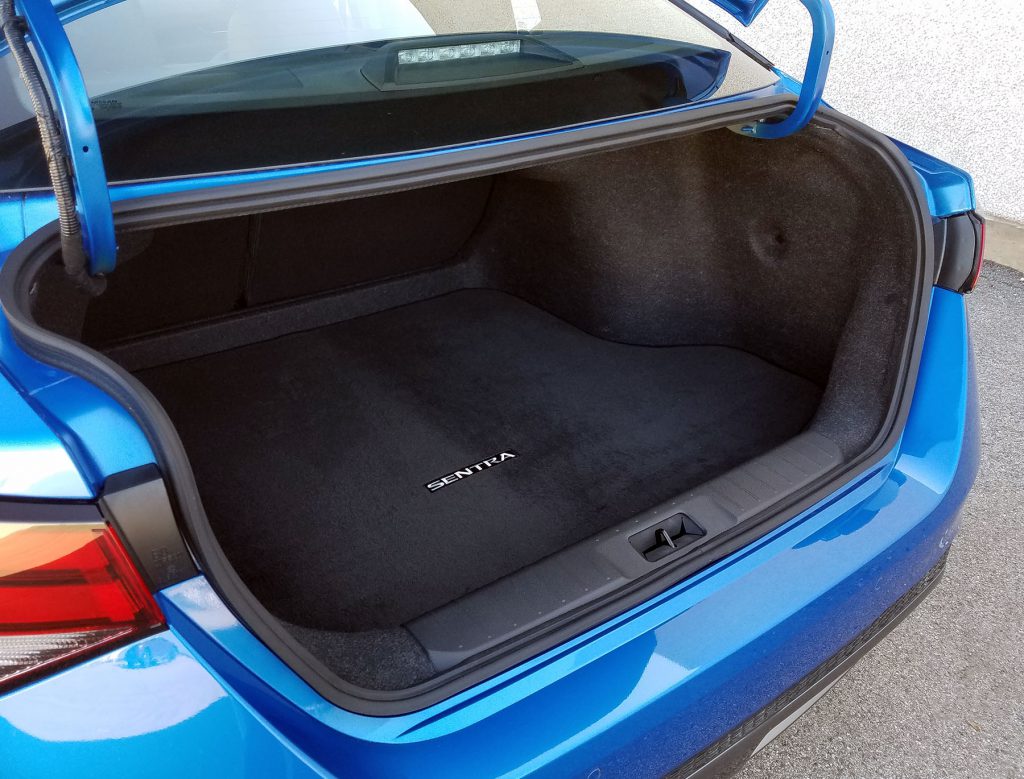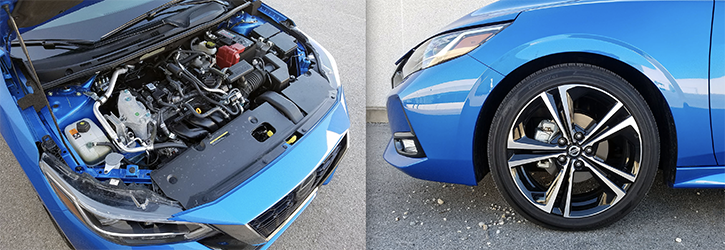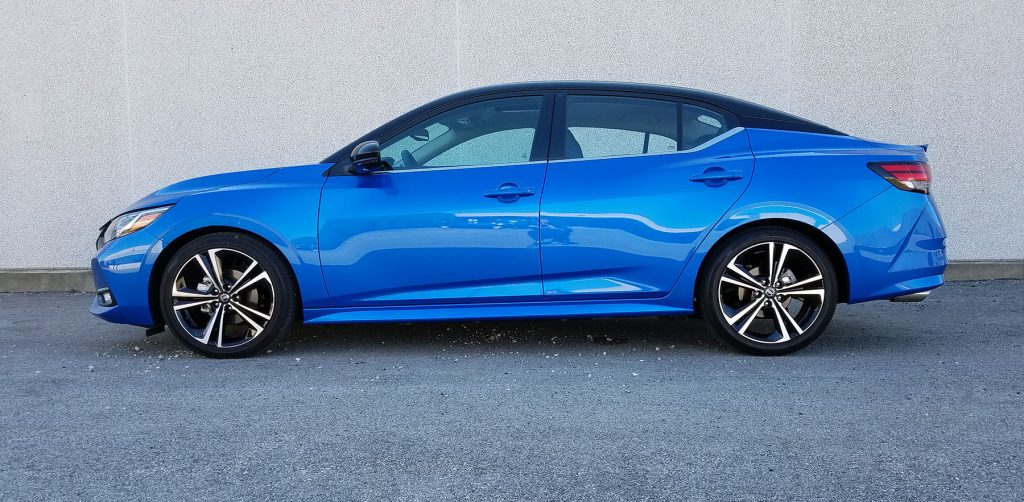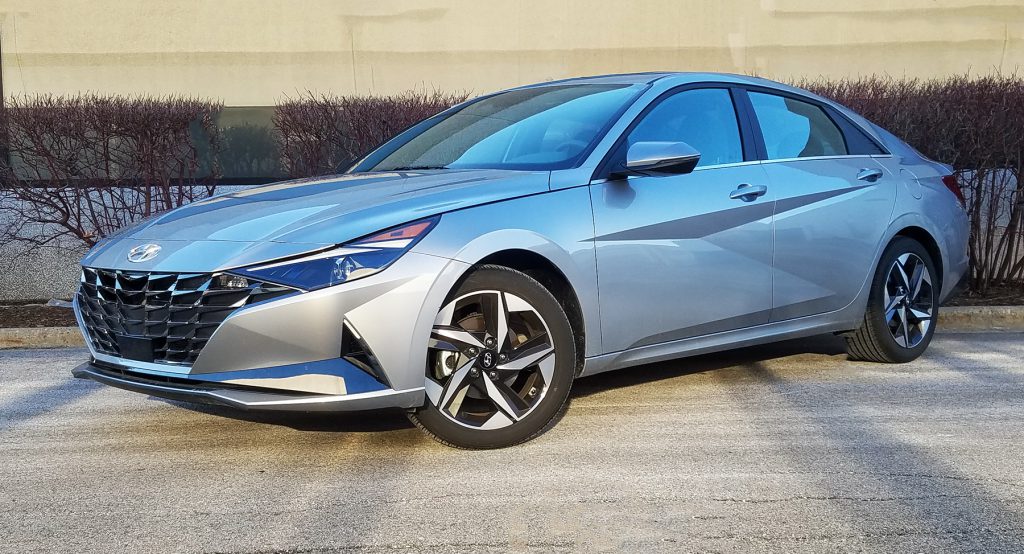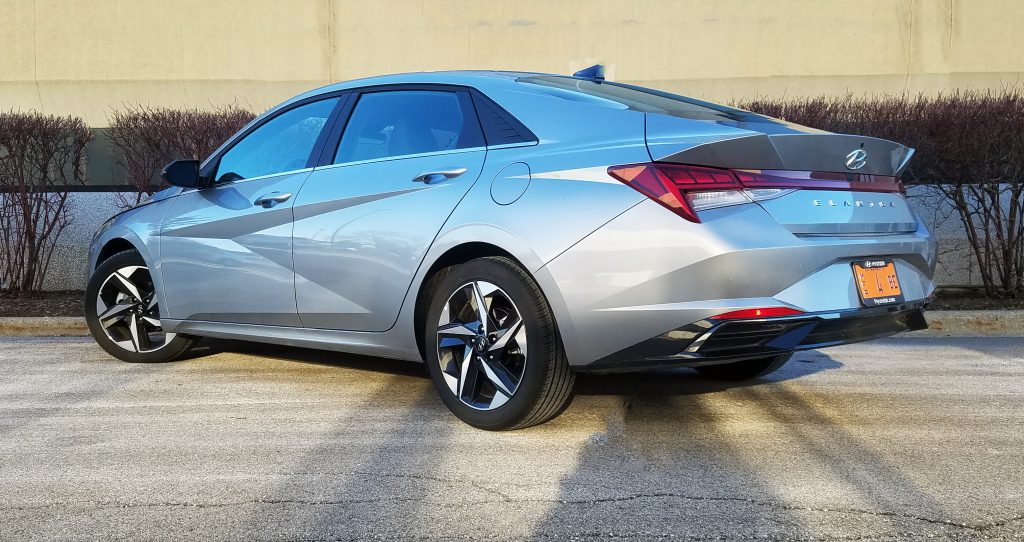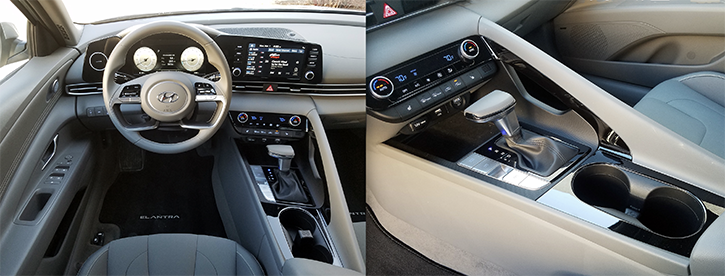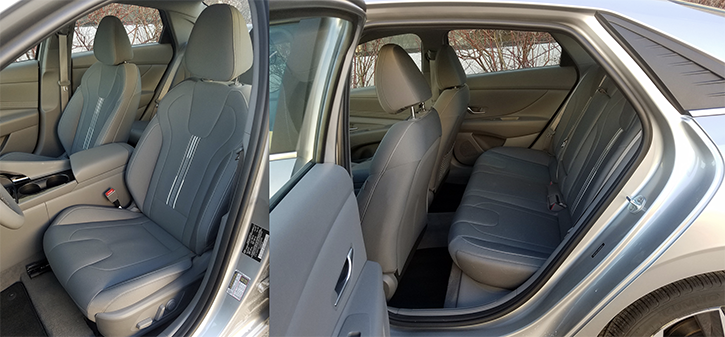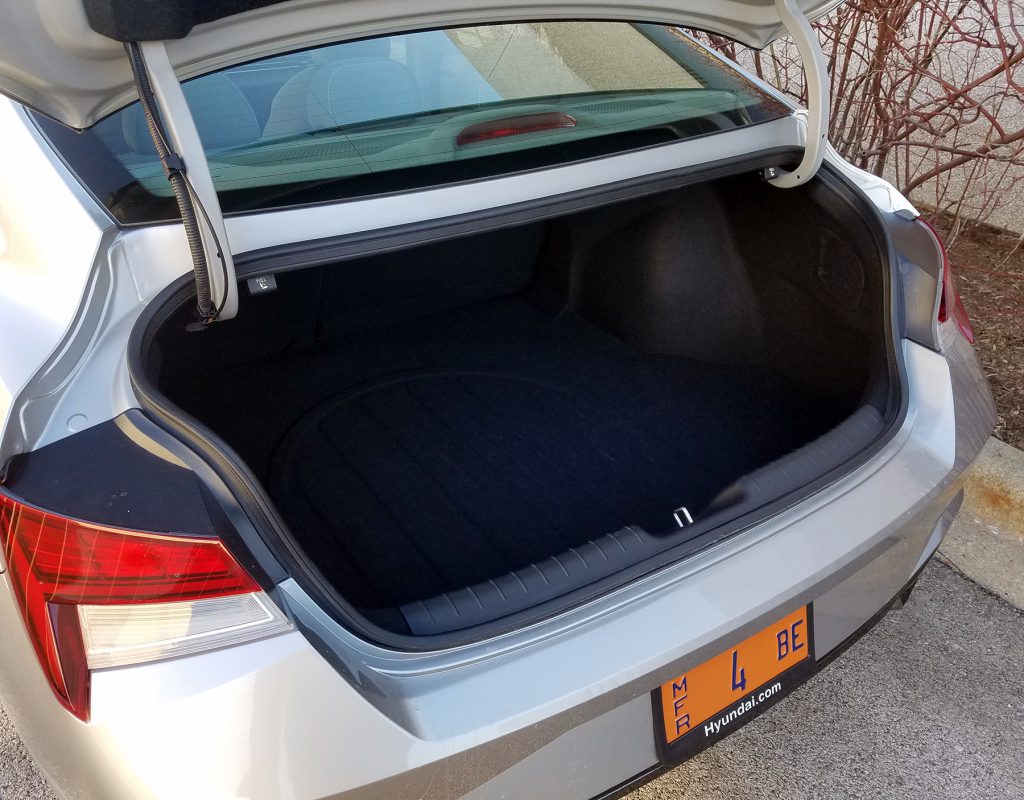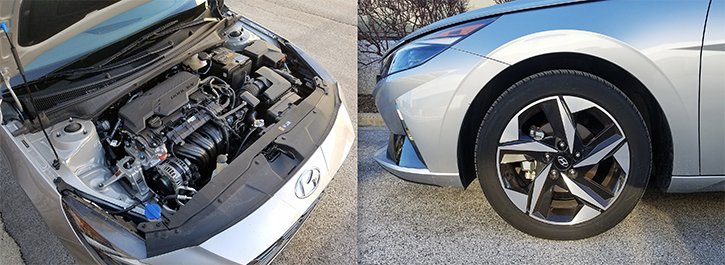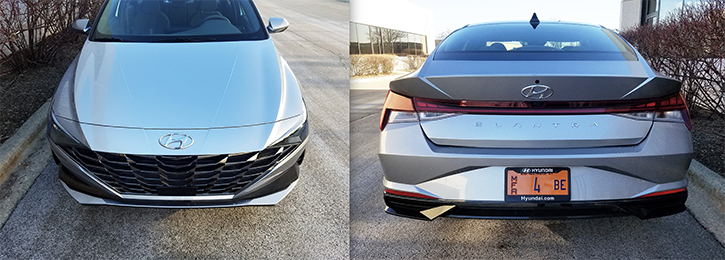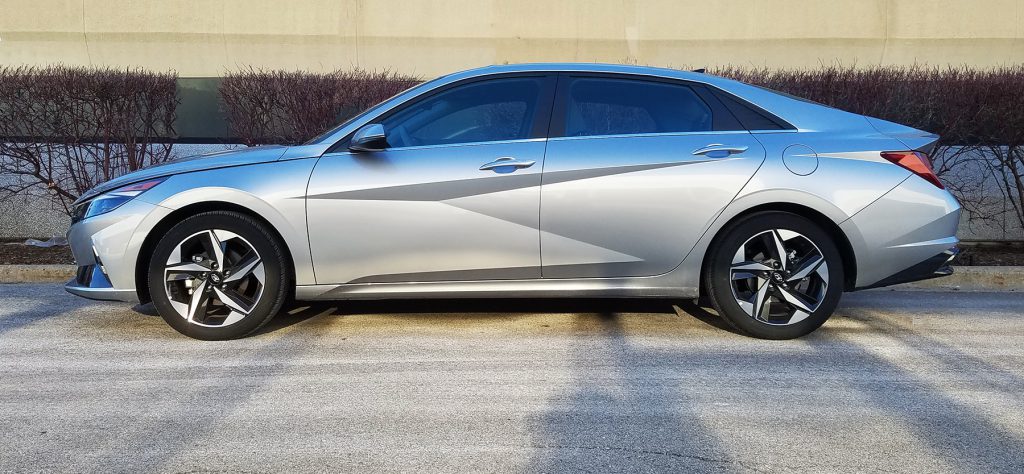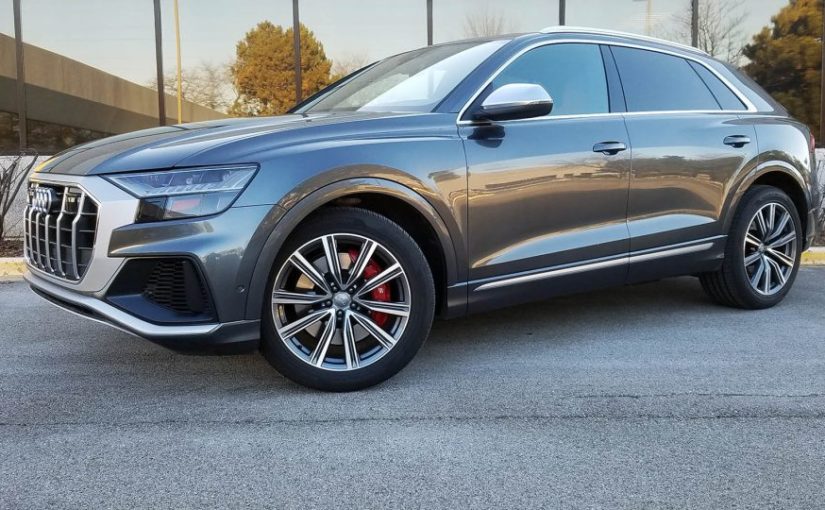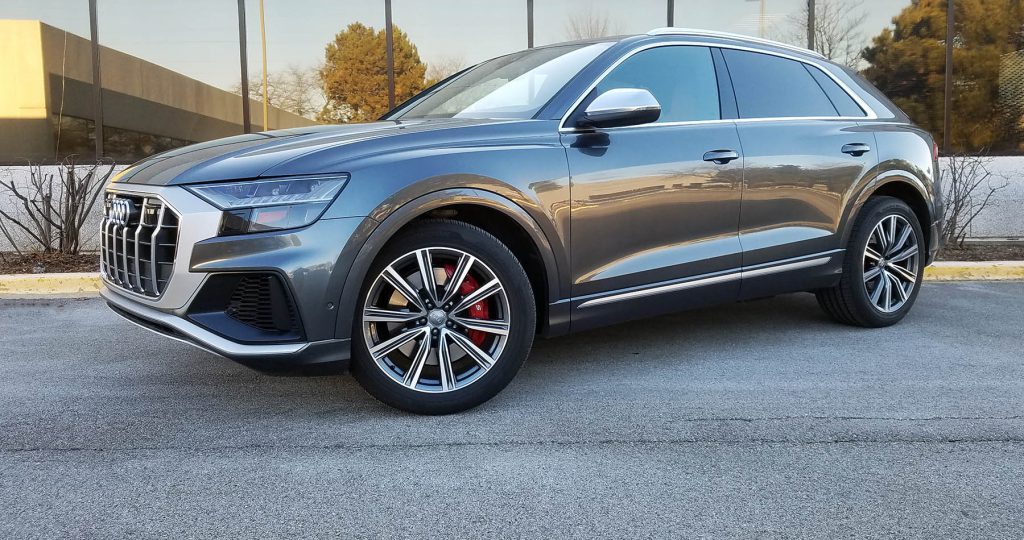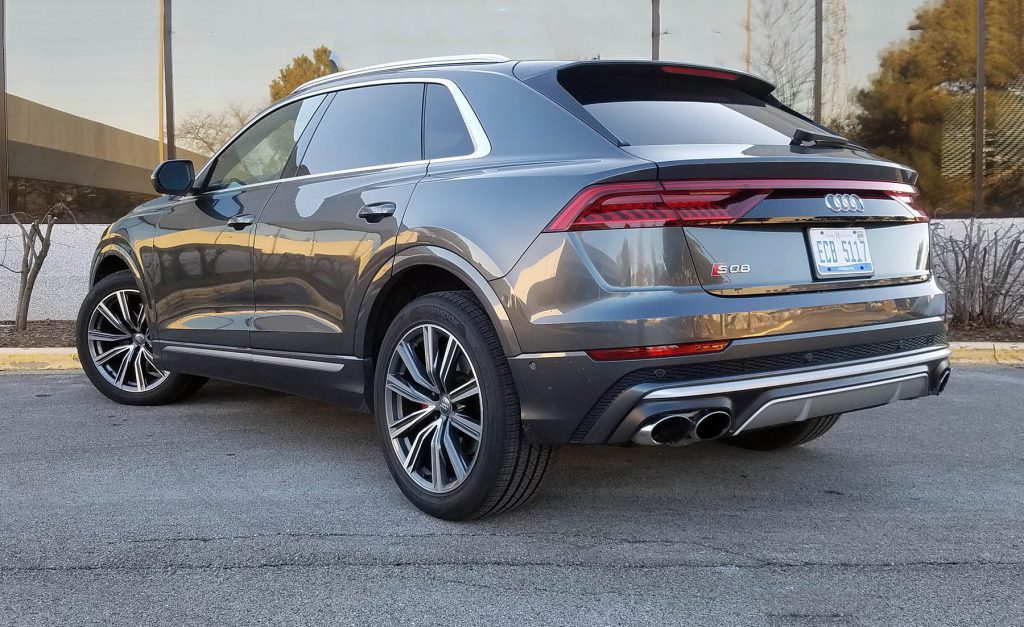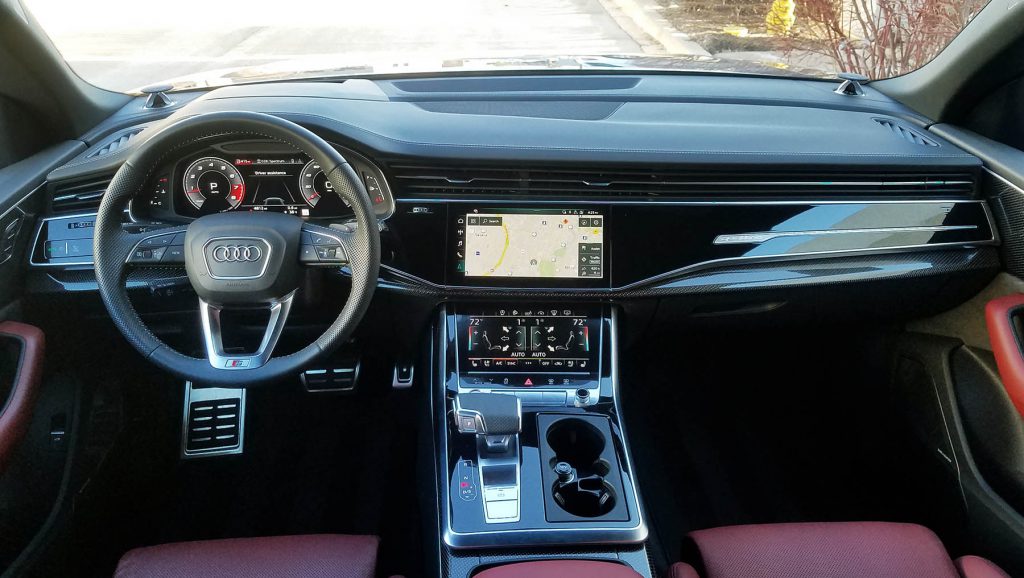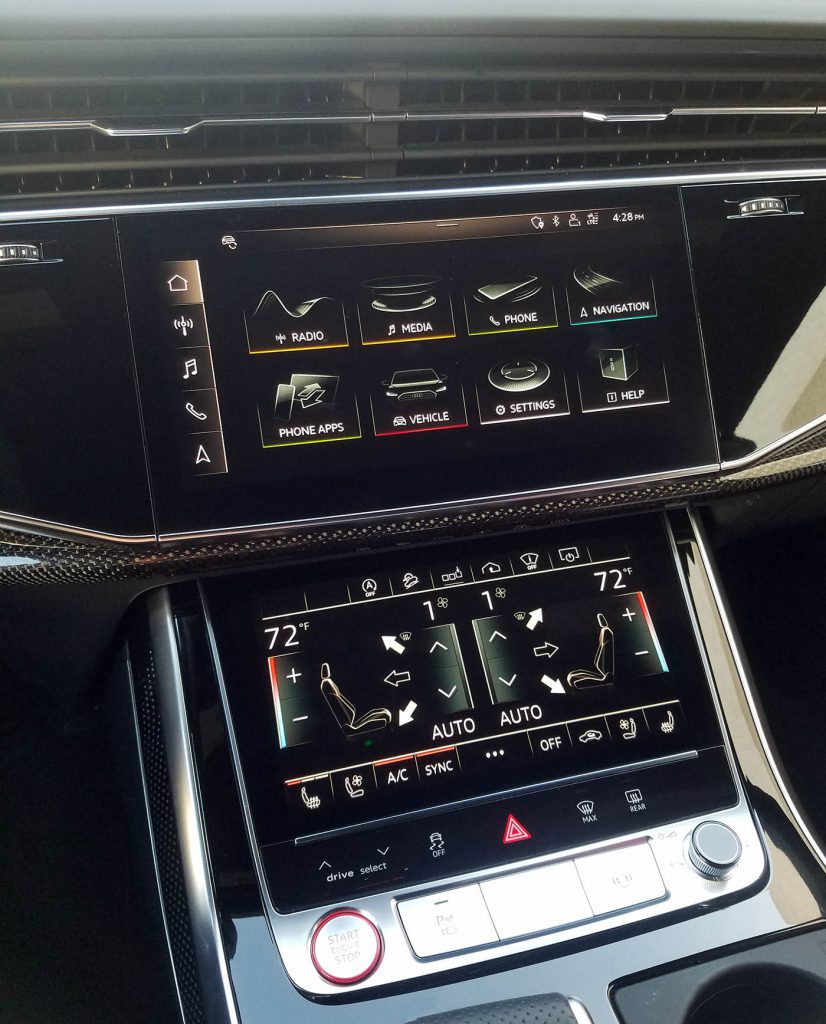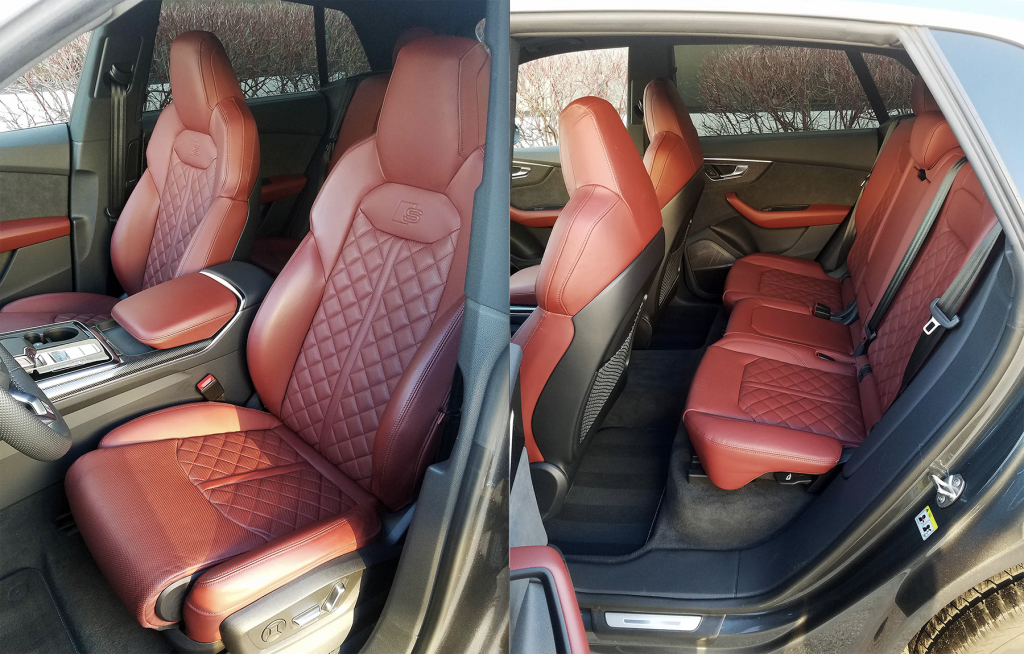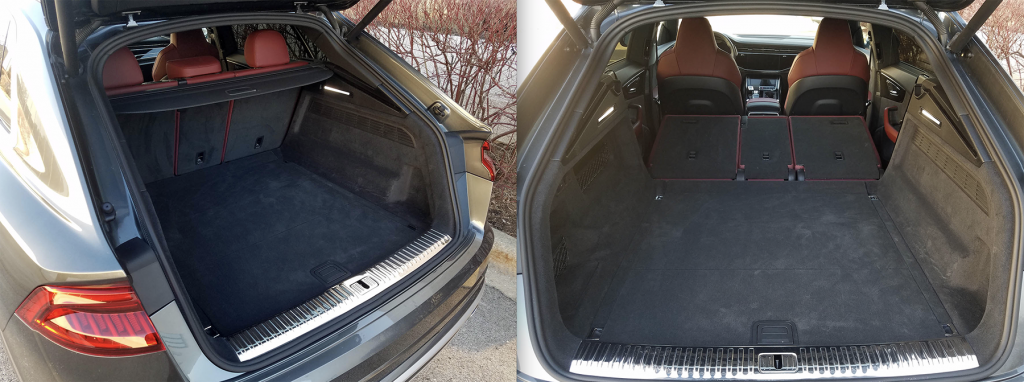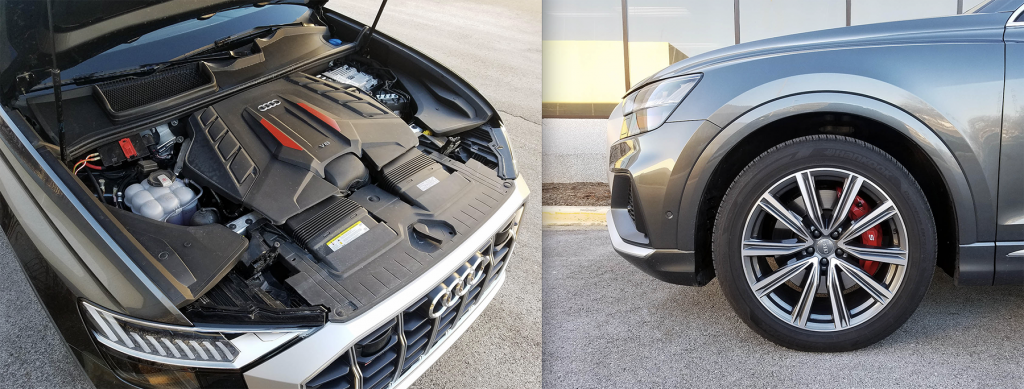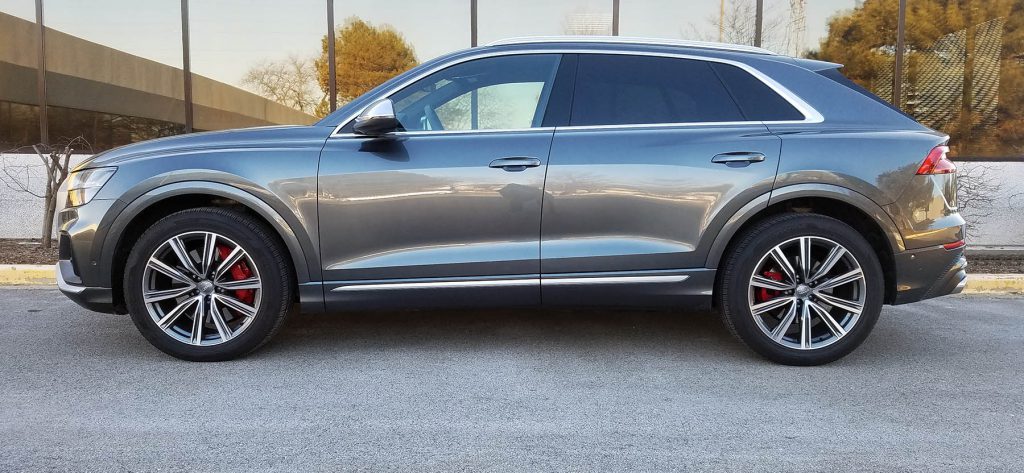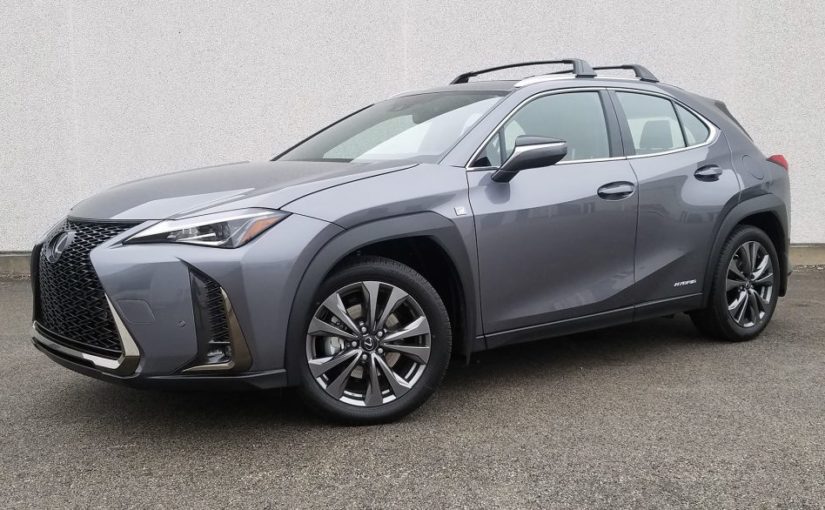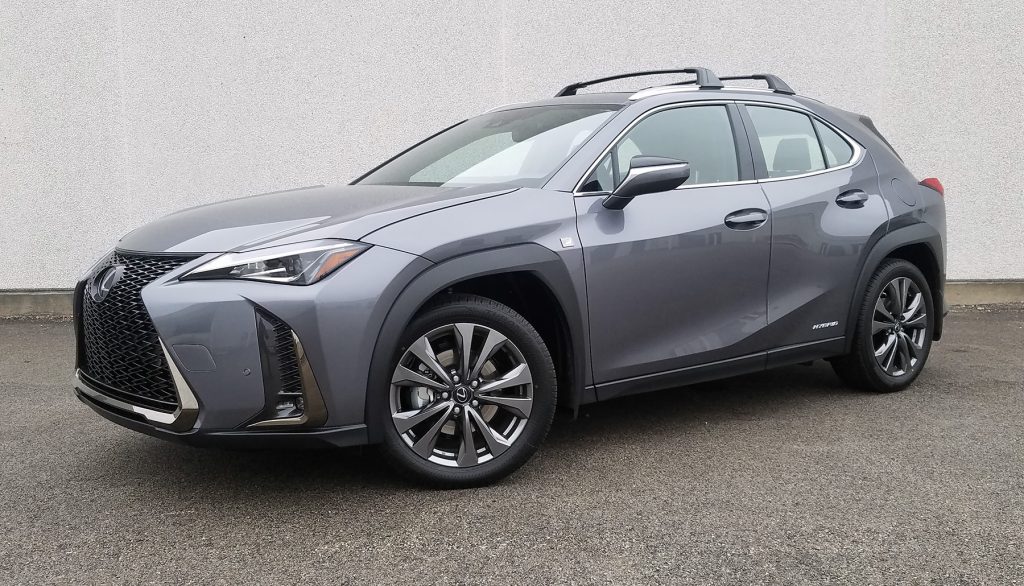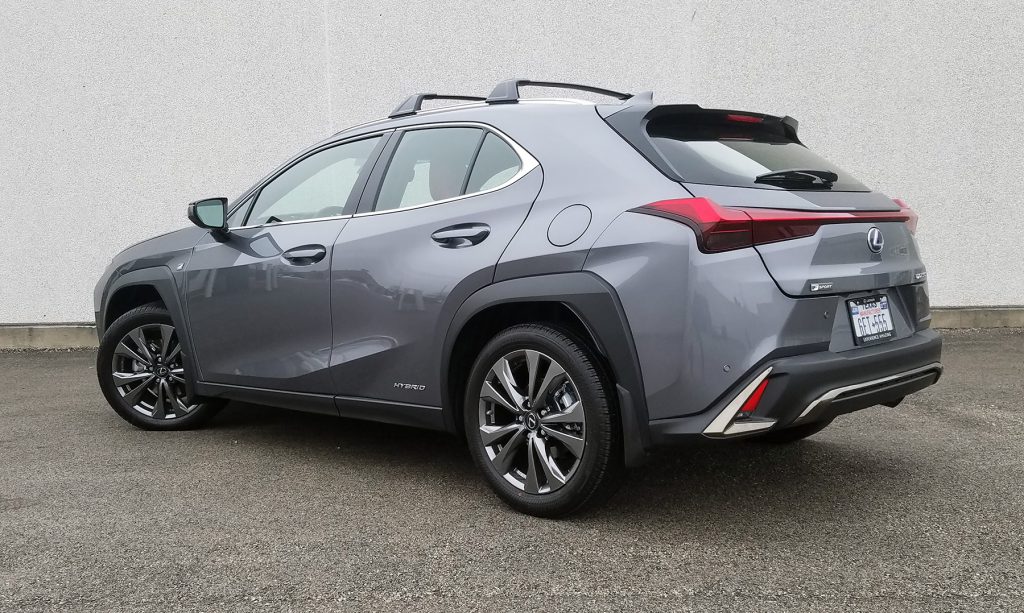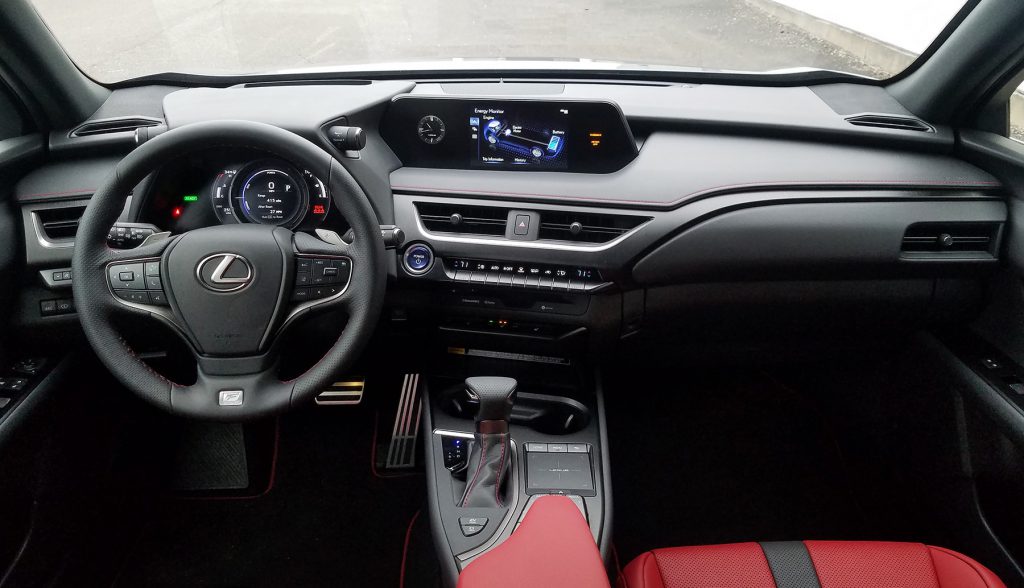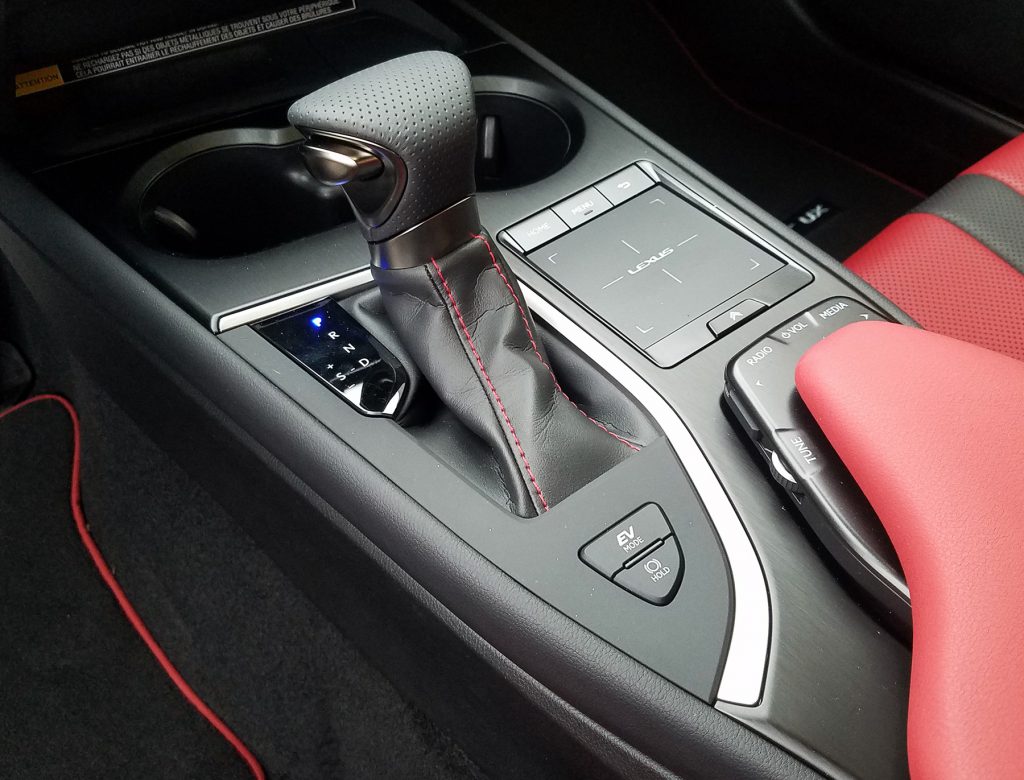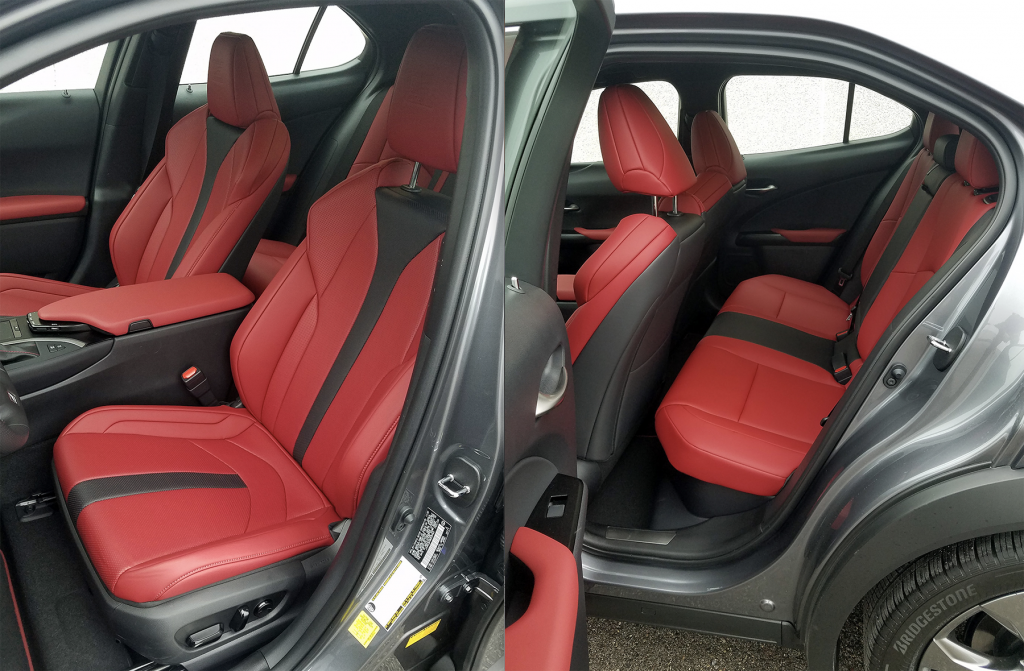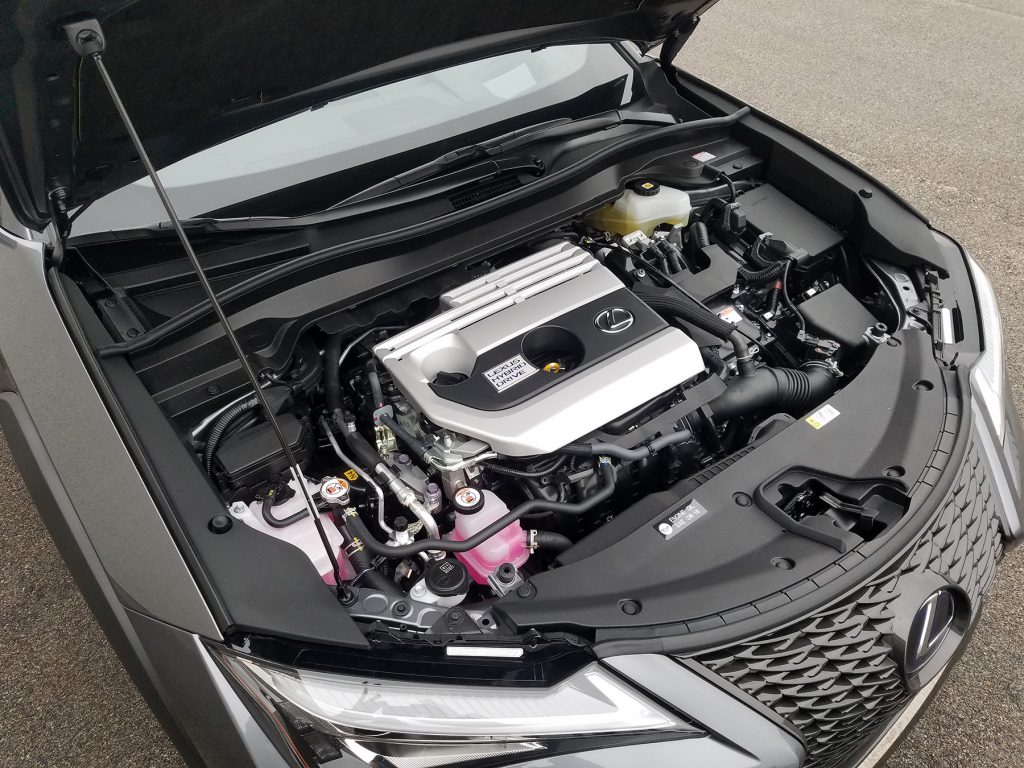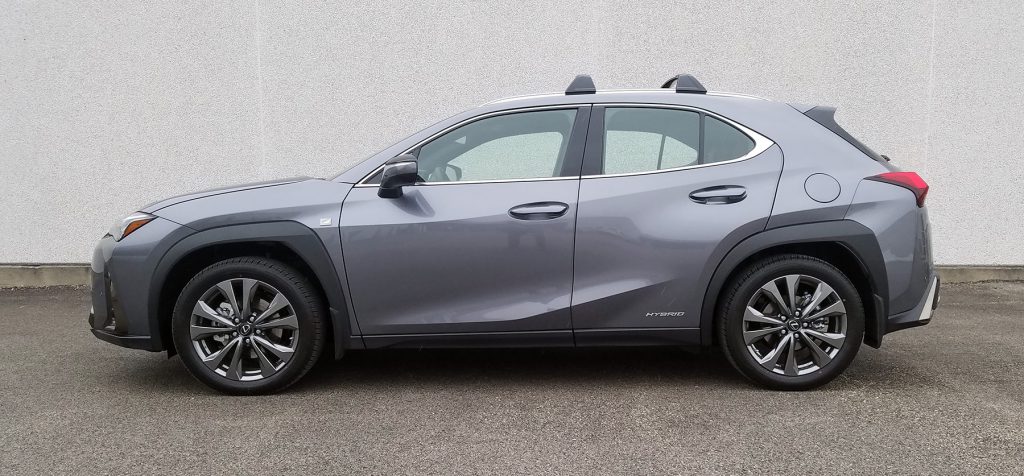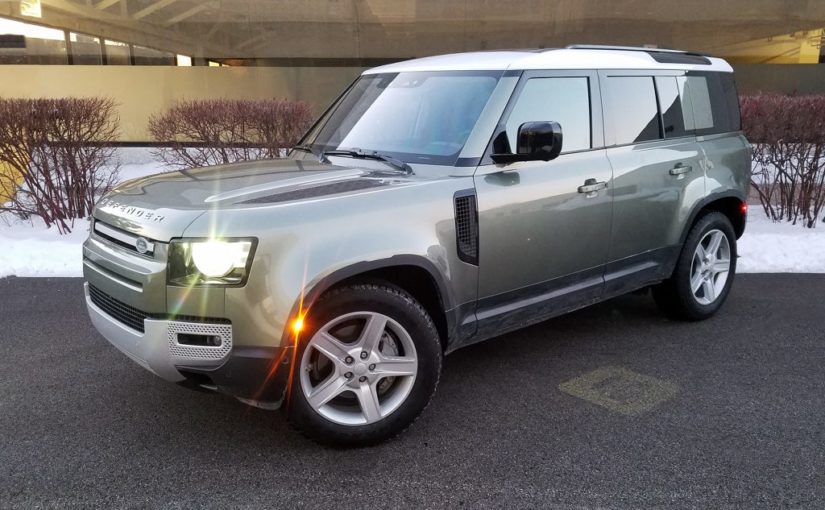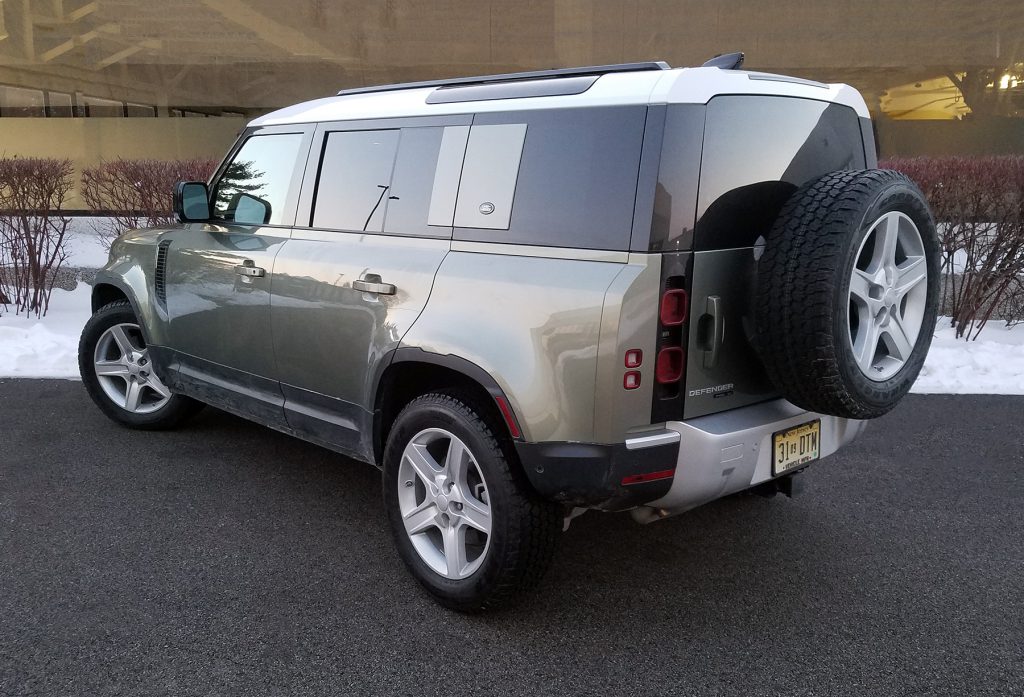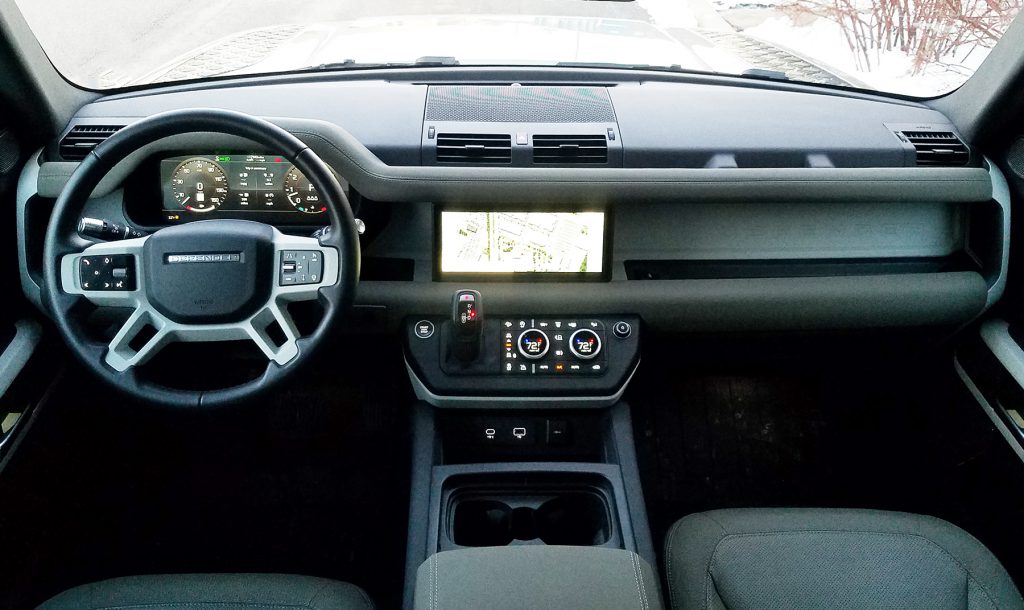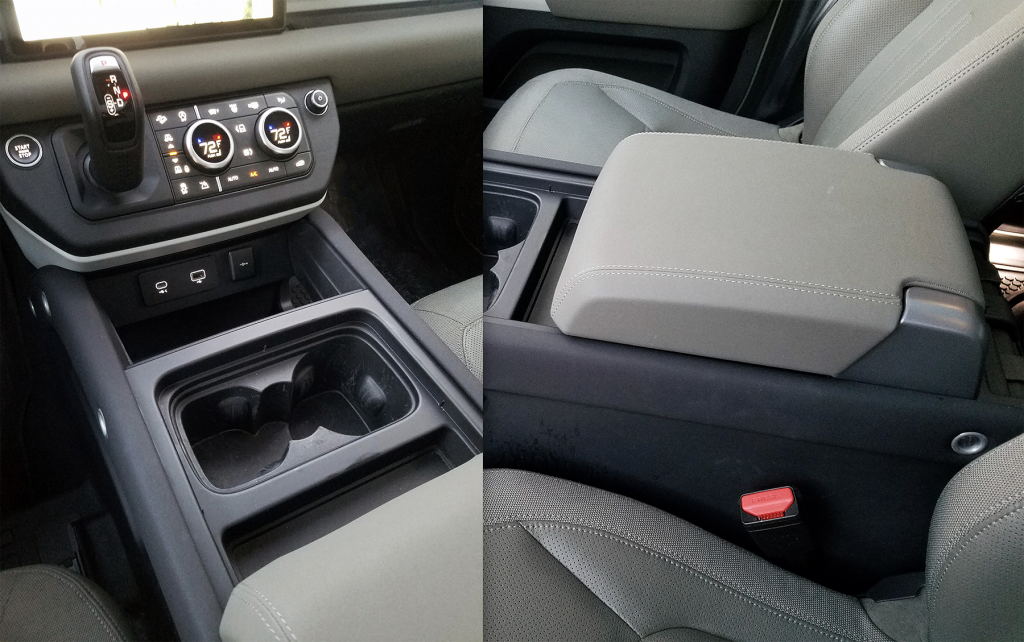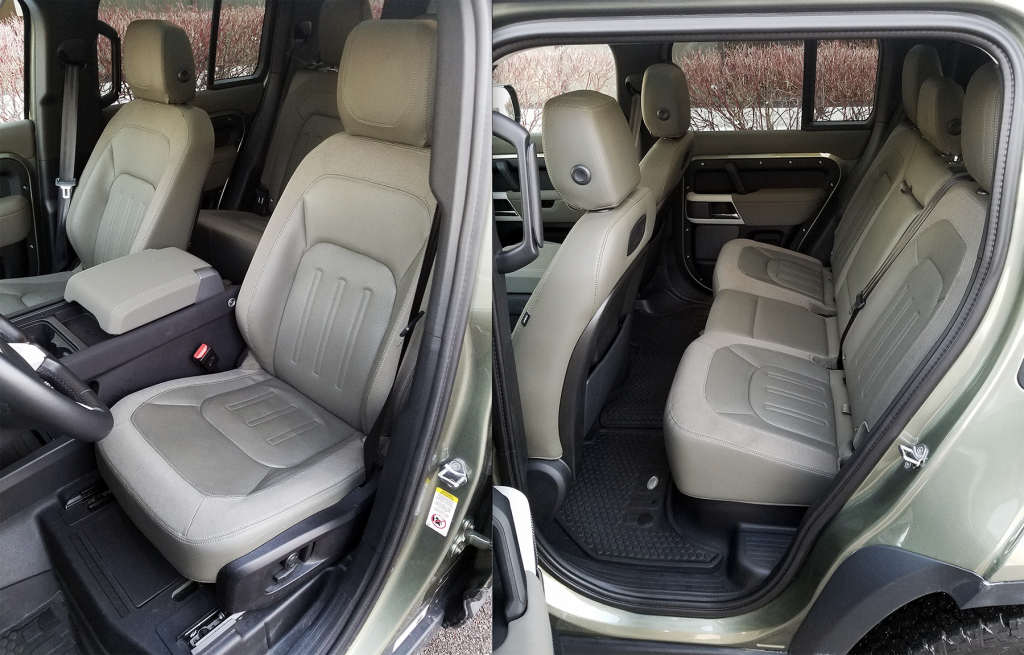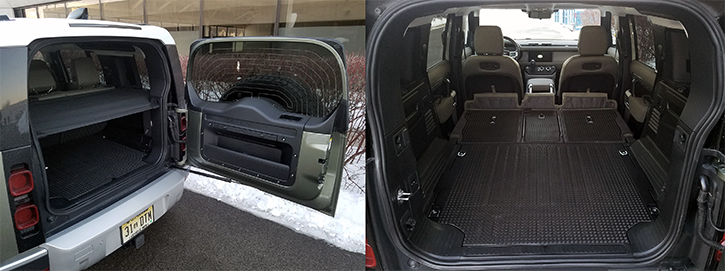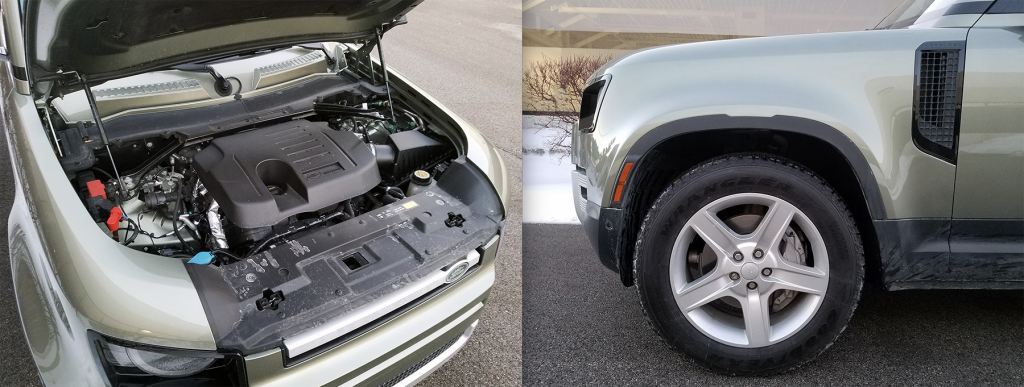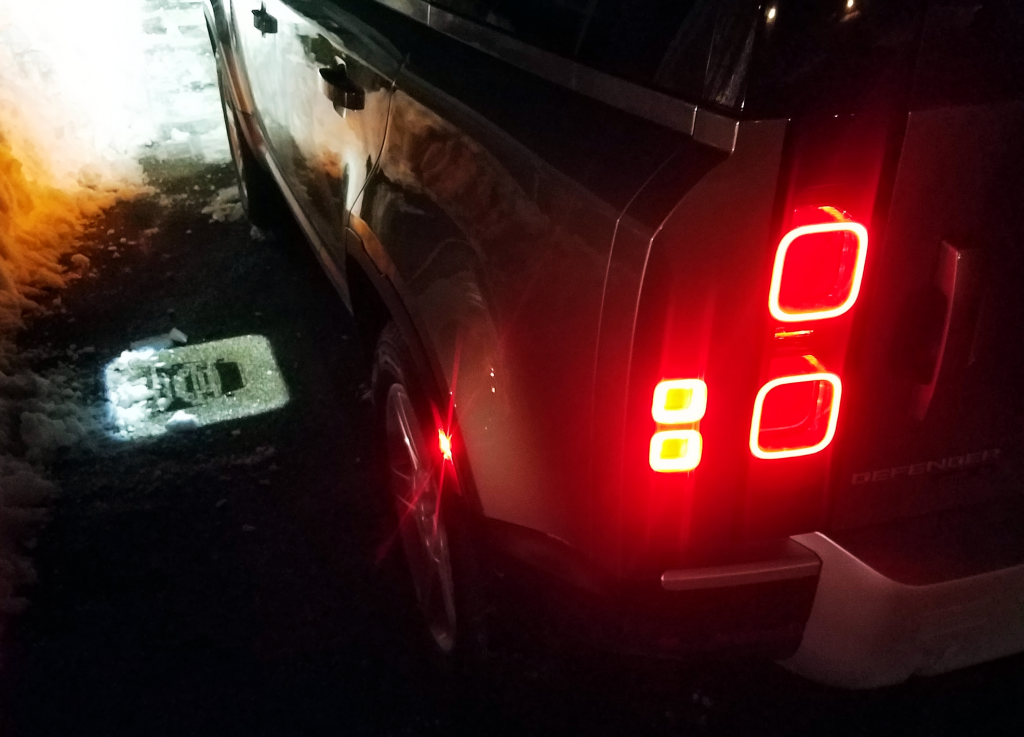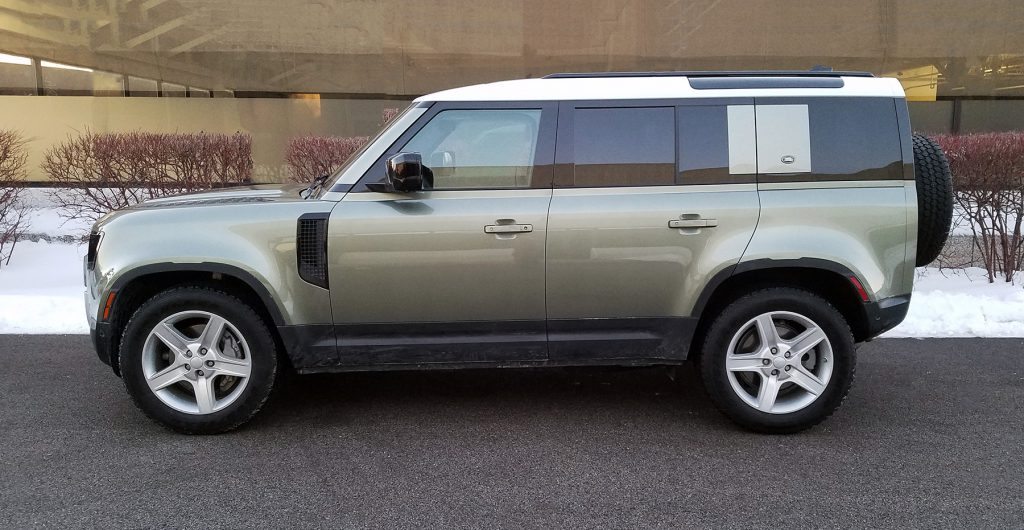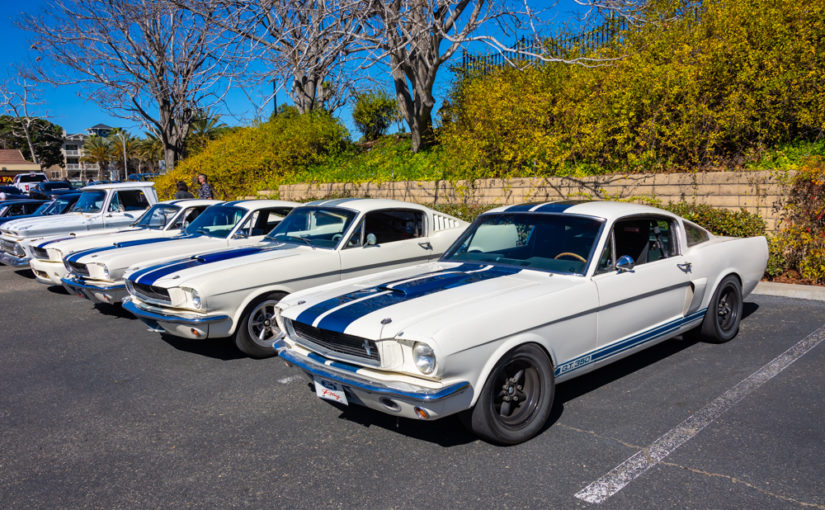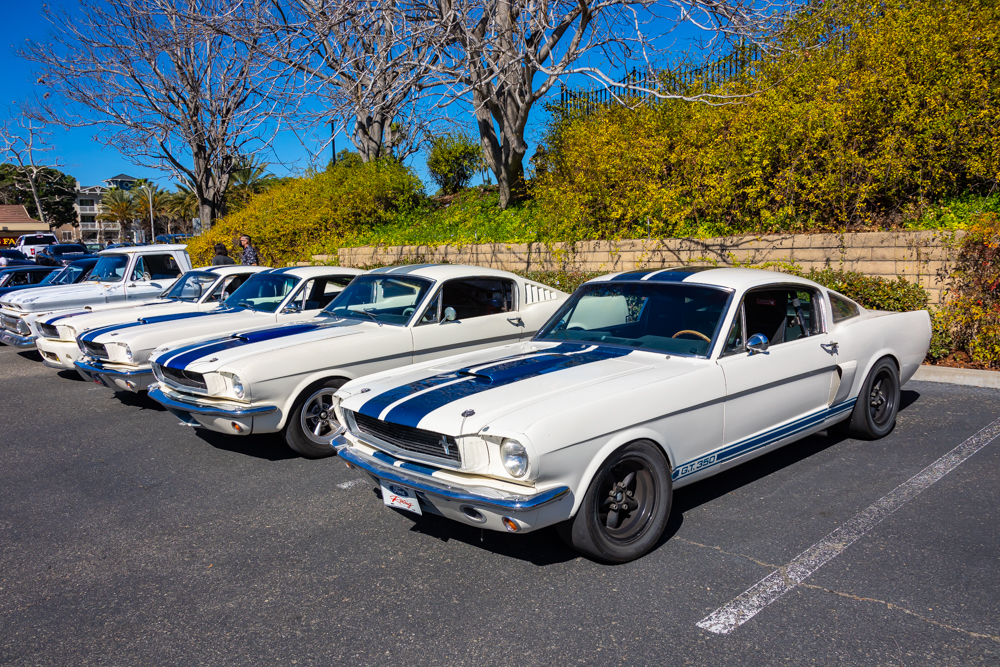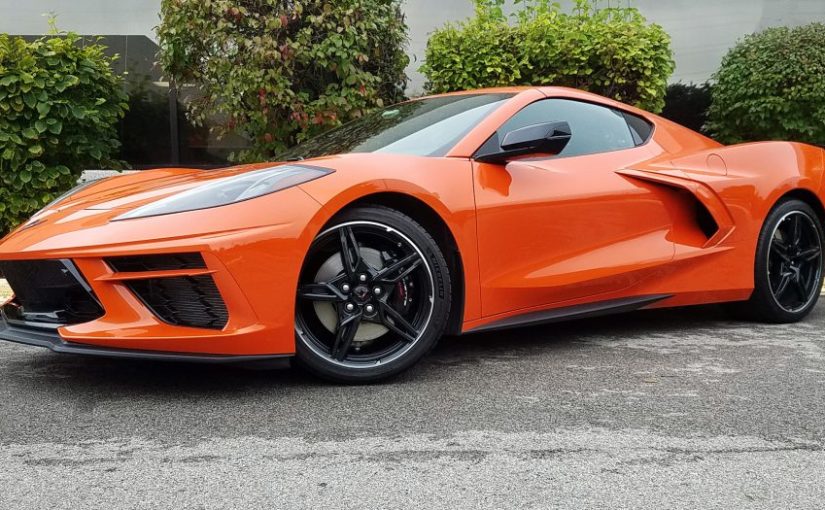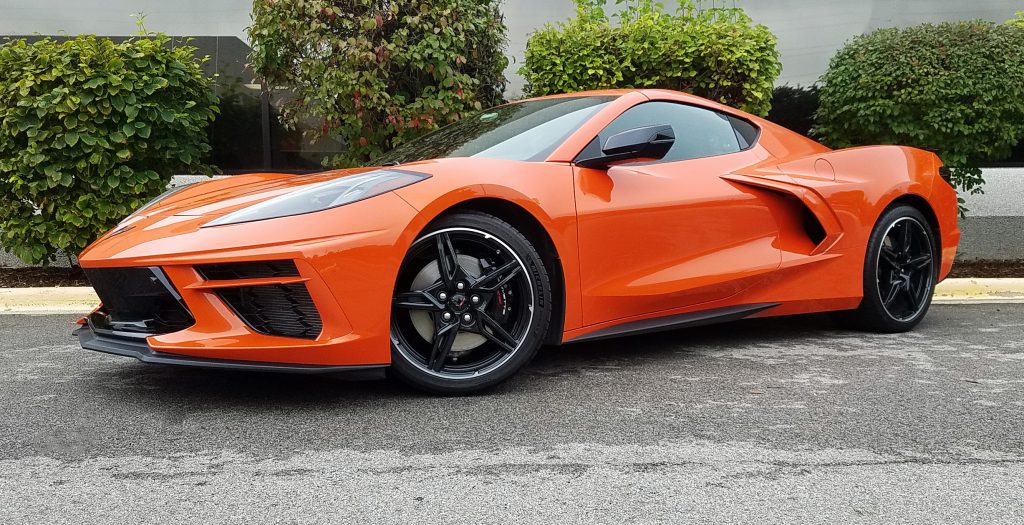
2020 Chevrolet Corvette Stingray Coupe in Sebring Orange Tintcoat (a $995 option)

2020 Chevrolet Corvette Stingray Coupe
Class: Premium Sporty/Performance Car
Miles driven: 616
Fuel used: 26.5 gallons
Real-world fuel economy: 23.2 mpg
Driving mix: 25% city, 75% highway
EPA-estimated fuel economy: 15/27/19 (city, highway, combined)
| CG Report Card |
|
|
|
|
| Room and Comfort |
B |
| Power and Performance |
A |
| Fit and Finish |
B |
| Fuel Economy |
B |
| Value |
A |
|
|
| Report-card grades are derived from a consensus of test-driver evaluations. All grades are versus other vehicles in the same class. Value grade is for specific trim level evaluated, and may not reflect Consumer Guide’s impressions of the entire model lineup. |
|
|
| Big & Tall Comfort |
|
|
| Big Guy |
C- |
| Tall Guy |
C |
|
|
| Big & Tall comfort ratings are for front seats only. “Big” rating based on male tester weighing approximately 350 pounds, “Tall” rating based on 6’6″-tall male tester. |
|
|
| Drivetrain |
| Engine Specs |
495-hp 6.2L |
| Engine Type |
V8 |
| Transmission |
8-speed automatic |
| Drive Wheels |
RWD |
Fuel type: Premium gas recommended
Base price: $58,900 (not including $1095 destination charge)
Options on test vehicle: 2LT Coupe Preferred Equipment Package ($7300), Z51 Performance Package ($5000), GT2 bucket seats ($1495), Front Lift Adjustable Height w/ memory ($1495), body-color exterior accents ($995), Sebring Orange Tintcoat paint ($995), 19-inch front/20-inch rear Carbon Flash painted aluminum wheels with machined edge ($995), black composite rockers (dealer-installed, $550), orange seat belts ($395), Carbon Flash Metallic painted outside mirrors ($100)
Price as tested: $79,315
Quick Hits
The great: Unbeatable level of performance for the dollar; broad range of available features and appearance options offer excellent customizability
The good: Respectable ride quality for a high-performance supercar
The not so good: Poor rear visibility; low-slung seats can make entry/exit tricky; some enthusiasts will bemoan lack of a manual transmission
More Corvette price and availability information
Damon Bell
The introduction of any new-generation Corvette is a big deal in the automotive world, and it’s an even bigger deal when that new-generation Vette represents a major reimagining of the car itself and the fulfillment of a long-rumored architectural change—that being the shift from a traditional front-engine layout (which the production Corvette has had ever since its introduction in 1953) to a mid-engine design, with the powerplant behind the passenger compartment.
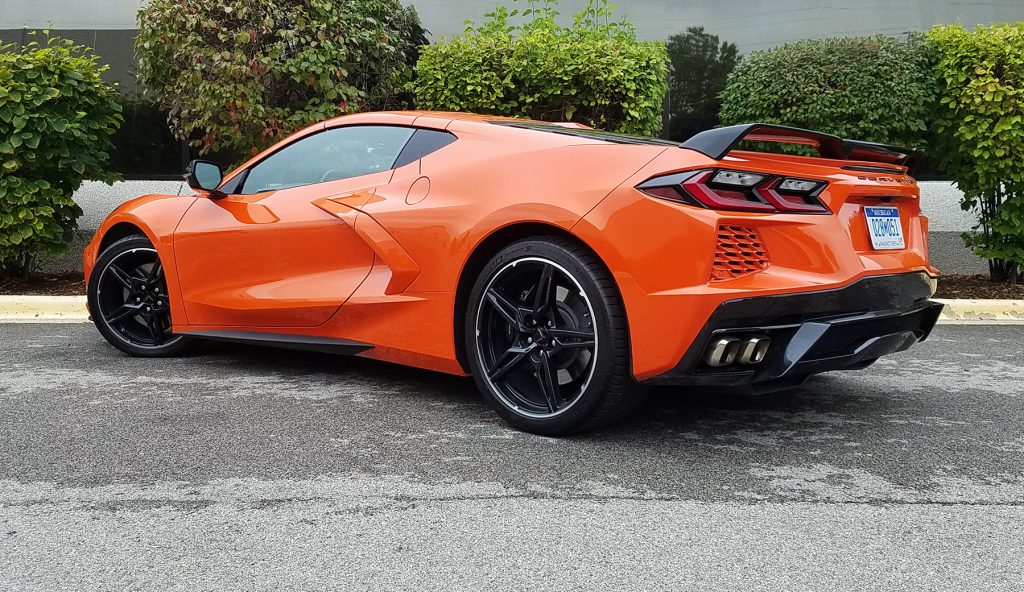
The C8 Corvette has an aggressive, highly sculpted look from any angle. Door-latch-release buttons are hidden underneath the leading edge of the bodyside-scoop openings. The rear-deck spoiler is included in the 2LT option group.
And that’s just what happened with the launch of the eighth-generation (or C8) Corvette for the 2020 model year. We previously reported on our experience with a C8 convertible in 1LT trim—you can check out that review here. Our coupe test vehicle was more lavishly equipped, and as a result it was almost $9K more than our convertible tester (this despite that fact that the convertible commands a starting-price premium of $7500 over the coupe). However, that money buys some very welcome features.
Test Drive: 2020 Chevrolet Corvette Convertible
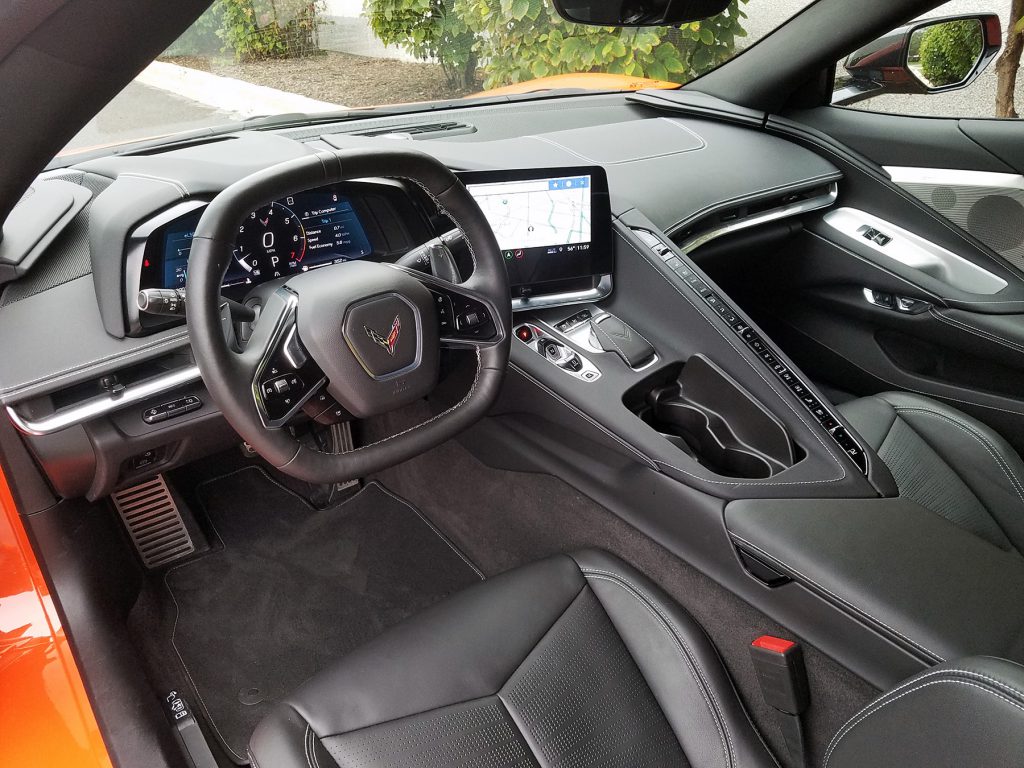
The C8’s cabin ambiance is a step up from previous-generation Corvettes. The cockpit is cozy at best, but the squared-off steering wheel helps free up a bit of leg space, and the extra-slim HVAC vents still put out a good amount of air.
The two main packages are the 2LT Preferred Equipment Package ($7300) and the Z51 Performance Package ($5000). The 2LT group adds a long list of comfort and convenience features: Chevrolet’s “Infotainment 3 Premium” touchscreen system with navigation, 14-speaker Bose premium audio system, head-up display, HD front curb-view camera, memory driver and passenger convenience package, rear camera mirror, performance data and video recorder, heated and ventilated seats, power lumbar control and power seat bolsters, heated steering wheel, advanced theft-deterrent system, universal home remote, wireless charging, heated power outside mirrors with integrated turn signals (auto dimming on the driver’s side), rear cross traffic alert, side blind-zone alert, and cargo nets.
Test Drive: 2020 Nissan 370Z NISMO
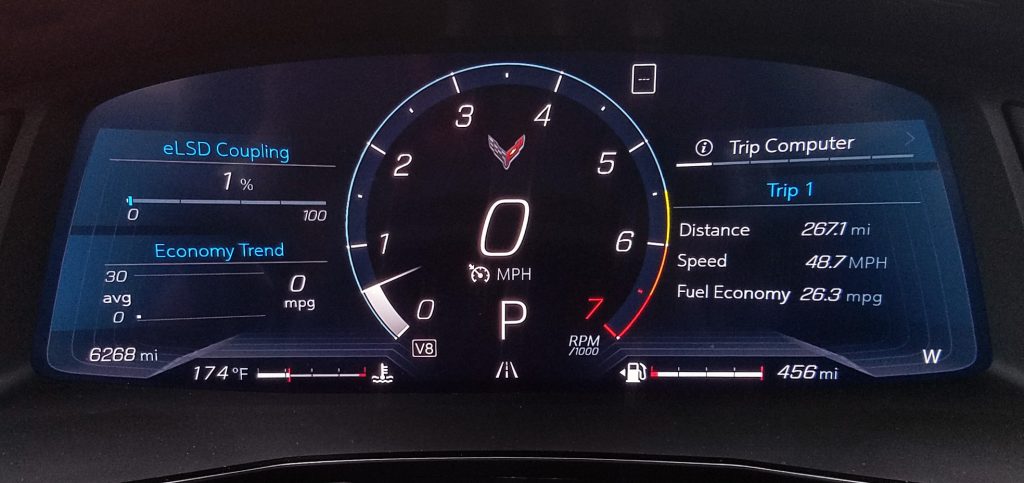
The digital gauge cluster is excellent–it boasts crisp, clear graphics and multiple display-layout options.
The Z51 package adds upgraded performance suspension, brakes, exhaust (which adds another 5 horsepower and 5 more pound-feet of torque), and rear axle ratio with an electronic limited-slip rear differential. Also included are a rear spoiler, high-performance run-flat tires, and a heavy-duty cooling system. Our test vehicle was further outfitted with the GT2 bucket seats, a novel height-adjustable front suspension, and a number of paint and trim upgrades that pushed the bottom-line price well past the $58,900 base MSRP, but still under $80K—which qualifies as a bargain for a performance vehicle of this caliber.
Test Drive: 2020 Aston Martin Vantage Coupe
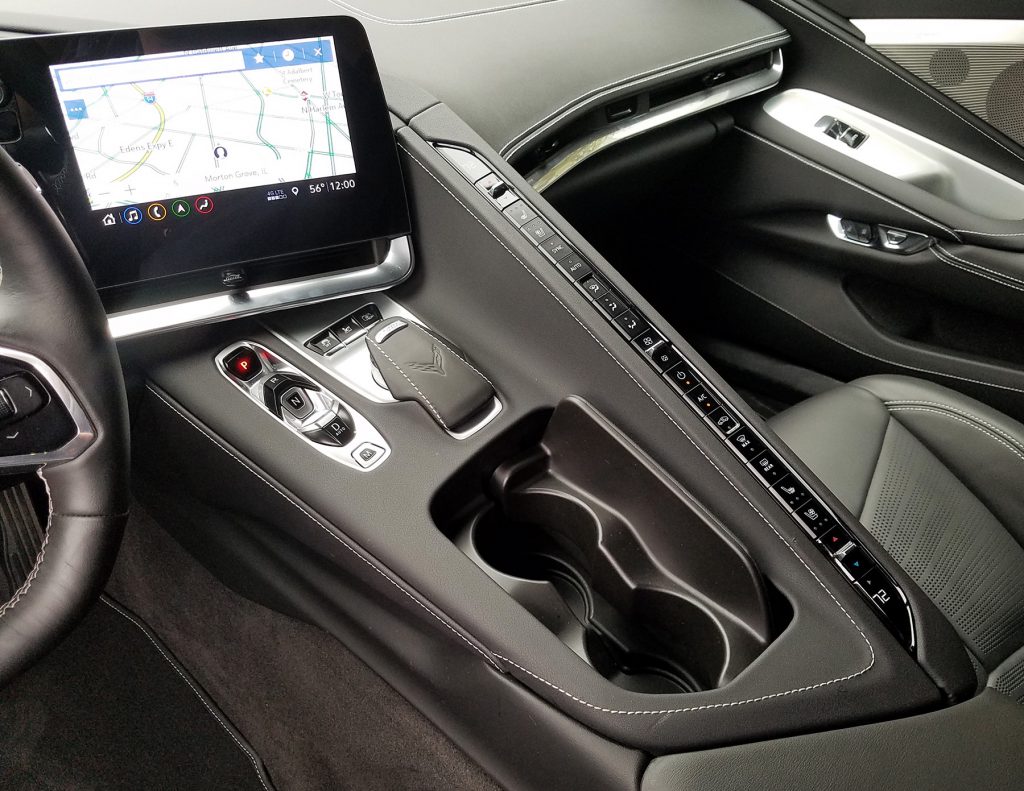
The push-pull gear selector fairly easy for our testers to acclimate to; the climate-control buttons, less so.
We took our Corvette coupe on a 520-mile road trip, and then put on almost 100 more miles of city driving, which gave us a good opportunity to experience the C8’s livability and practicality as well as its performance. And that performance, of course, is stellar. Acceleration is superhero-quick, and cornering ability is outstanding, with virtually no body lean in fast turns. The 8-speed dual-clutch automatic transmission reminds us a bit of the Nissan GT-R’s 6-speed dual-clutch transmission—great at quick upshifts and downshifts in vigorous performance driving, but sometimes less content, and less refined, when simply trundling around town. Ride quality is more than respectable, given the handling prowess on hand.
Quick Spin: 2020 Dodge Challenger R/T Scat Pack Widebody
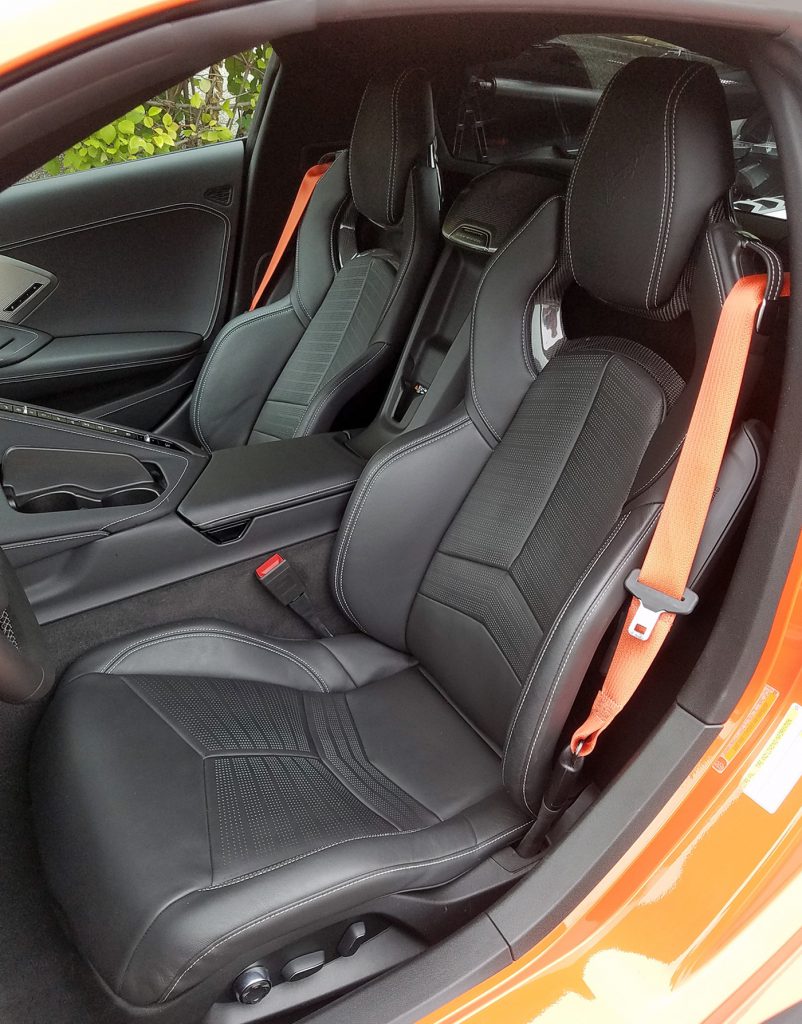
The optional GT2 bucket seats are supportive and long-haul comfortable.
The Z51’s exhaust sounds delightfully snarly, and it actually caused a bit of cognitive dissonance for us. We’ve driven a few mid-engine exotics, such as the Audi R8 and Acura NSX, and their exhaust notes have a Euro/tech-oriented sound, so our “muscle memory” of those vehicles meant that the brawny, US of A muscle-car bellow of the Corvette really took us aback. However, the rear-mounted engine, and the single pane of glass between the cockpit and the engine compartment, means that some less lusty mechanical sounds—occasional whirrs, hisses, and clanks—find their way into the cabin too. Also, tire noise is greatly affected by the kind of road surface you’re driving on. We hit some rough freeway pavement during our road trip, which made things quite noisy inside the cabin.
Like previous Corvettes, the C8’s cockpit is rather cozy. Your tester is 6’6”, and he had juuuust enough space overall, though wearing a helmet comfortably in the driver’s seat is probably a no-go. The upgraded GT2 seats are supportive and long-haul comfortable, though entry/exit is the expected drop-in/climb-out affair, due to the low-slung ride height and low-mounted seats. Also, the doors need to be opened wide for big-and-tall occupants to get in and out—which can be tricky in tight quarters.
A couple other tall-person problems: The glovebox door opens right onto our knees in the passenger’s seat, and the squared-off steering wheel (an important space saver, given the cockpit’s cozy dimensions) blocked our view of the top edge of the digital gauge cluster. Thankfully, the configurable head-up display included in the 2LT equipment group does a great job of conveying a broad range of information at a glance.
Test Drive: 2020 BMW M8 Competition Convertible
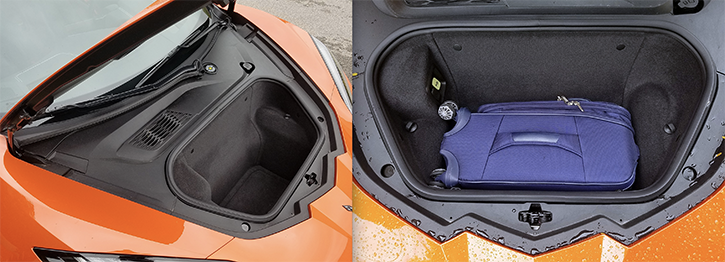
A standard carry-on-size suitcase just fits in the Corvette’s front trunk.
The unusual, longitudinally oriented push-button gear selector works well for the most part… we got used to it pretty easily. However, the longitudinally oriented climate controls are a little funky at first. The buttons are arranged along a pronounced “ridge” that cascades down from the center of the dashboard, bisecting the cockpit. That line of buttons is about a foot and a half long… a lot of real estate to scan quickly to locate the button you’re looking for. We didn’t find it that natural during our time with the car, but owners will probably acclimate.
Test Drive: 2020 Mercedes-AMG GT C Roadster
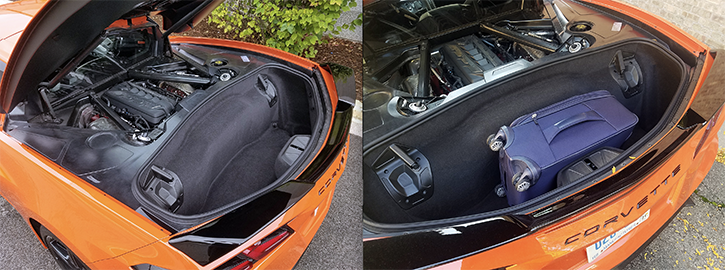
The Corvette’s rear trunk is right next door to the engine compartment, so it gets warm on long drives. There’s room for a couple golf bags or a carry-on suitcase and more back there, though we had to fiddle with the positioning of our suitcase to get the trunk lid to close properly.
The drive-mode selector, which offers Tour, Weather, Sport, and Track modes, is prominently placed and lavishly detailed. It has a separate upholstered wrist rest (complete with contrast stitching and an embossed Corvette-flag logo) and a metal adjustment knob with a lot of resistance… it seems as though the Vette’s engineers really wanted to make you feel like you were doing something when using that knob. Maybe they were thinking they needed a center-console consolation prize of sorts to make up for the lack of an available manual transmission?
Test Drive: 2020 Cadillac CT5-V
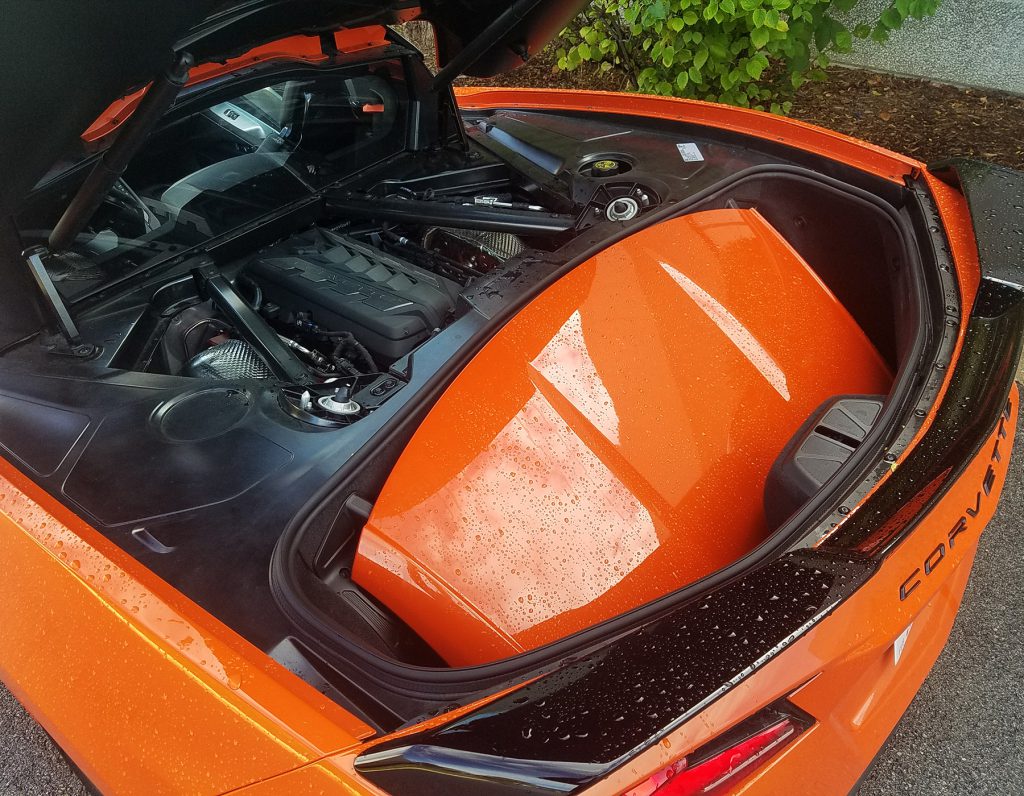
The removable targa-roof panel securely locks into latches in the rear trunk area for easy storage, but it takes up almost all the trunk’s space.
Forward visibility is fantastic, thanks in no small part to the cab-forward cockpit and short nose enabled by the mid-engine layout… though if you’re accustomed to previous Corvettes, looking out over that short hood will take a little getting used to. The view out the rear is subpar, however—a common issue with mid-engine sports cars. GM’s rear camera mirror (it’s included in the 2LT package) helps in certain driving situations, but we found the video camera view somewhat disorienting (and even a little headache-inducing) while driving. Thankfully the mirror can be easily toggled back and forth between a traditional rearview mirror and the video camera display. The generously sized, well-placed outside rearview mirrors also do their part to aid rear visibility.
The “front lift adjustable height w/ memory” feature ($1495) and HD front curb-view camera (included in the 2LT package) are handy features that give real peace of mind when navigating tight spots. The height-adjustable front suspension allows the Vette to traverse steep driveways and speed bumps and such without scraping, and it can even be linked to GPS data to “remember” where such obstacles are and activate automatically.
The Corvette’s dual-trunk setup helps its practicality overall, but there are still some compromises you’ll have to make. There’s 12.6 cubic feet of space in total, but it’s split between the front trunk (the “frunk”) and rear trunk. That time-honored trunk-space metric—a couple sets of golf clubs—will fit in the rear trunk, but there was barely enough room for our standard rollerboard carry-on suitcase (we had to load it in with its backside to the rear of the vehicle before the trunklid would close). Also, the rear trunk also gets rather warm on longer drives, since it’s right next door to the engine. If you live a good distance from the grocery store, maybe put your ice cream and frozen foods in the frunk.
More Than 6 Decades of the Corvette in Pictures
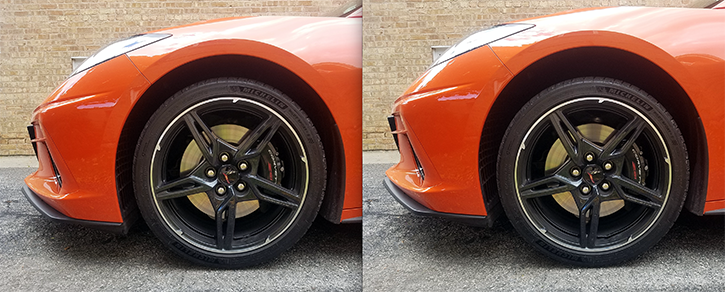
The $1495 height-adjustable front suspension is a useful option that helps avoid scraping the Corvette’s nose on steep driveways and speed bumps and the like. An HD front curb-view camera is included in the 2LT package; it includes front as well as left- and right-side front-wheel views that make it easier to avoid scuffing the nose or a wheel rim.
The removable targa-roof panel is great when you want some open-air fun, but removing it and stowing it is a two-person job… and even then it’s a little awkward. The top section neatly locks into place in the rear trunk, but that basically takes up all the trunk’s cargo capacity, save for a couple jackets or coats.
The Corvette sees just a few detail changes for 2021, such as wireless Apple CarPlay and Android Auto capability, new colors and body-stripe options, and the availability of the Magnetic Selective Ride Control suspension without the Z51 Performance Package. There are even hotter Corvette variants on the horizon as we move further into the C8 era—including electric-motor AWD versions, if the rumors are true—and those will be a big deal too.
The 1984 Corvette and the Mysterious 15-Inch Wheels
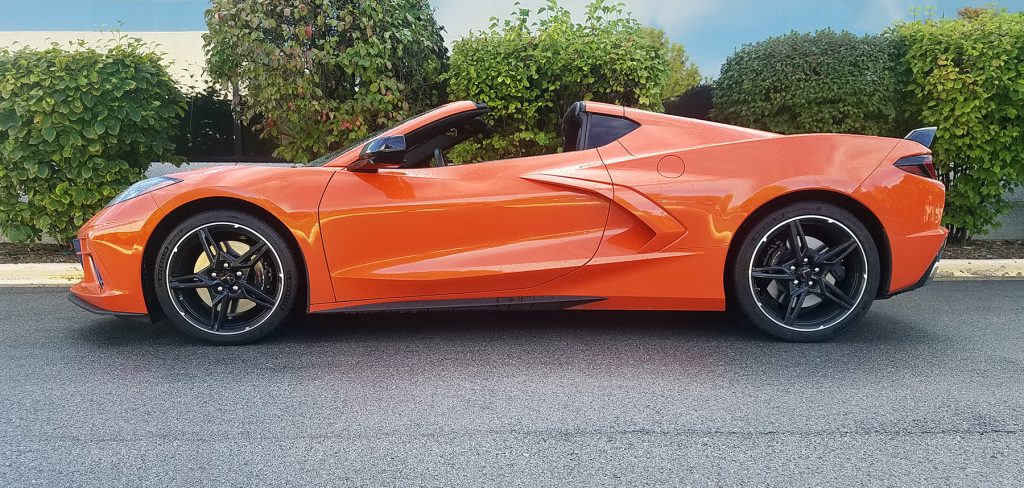
The C8 Corvette is an ambitious and successful re-imagining of America’s sports car. The new mid-engine layout is a radical change, but it provides new levels of performance potential–and Chevrolet engineers took pains to ensure that the traditional Corvette virtues of relative affordability and practicality didn’t fall by the wayside.
Listen to the very entertaining Consumer Guide Car Stuff Podcast
2020 Chevrolet Corvette Stingray Coupe Gallery
(Click below for enlarged images)
The 1984 Corvette and the Mysterious 15-Inch Wheels
Written by: The Daily Drive staff on February 5, 2021.
